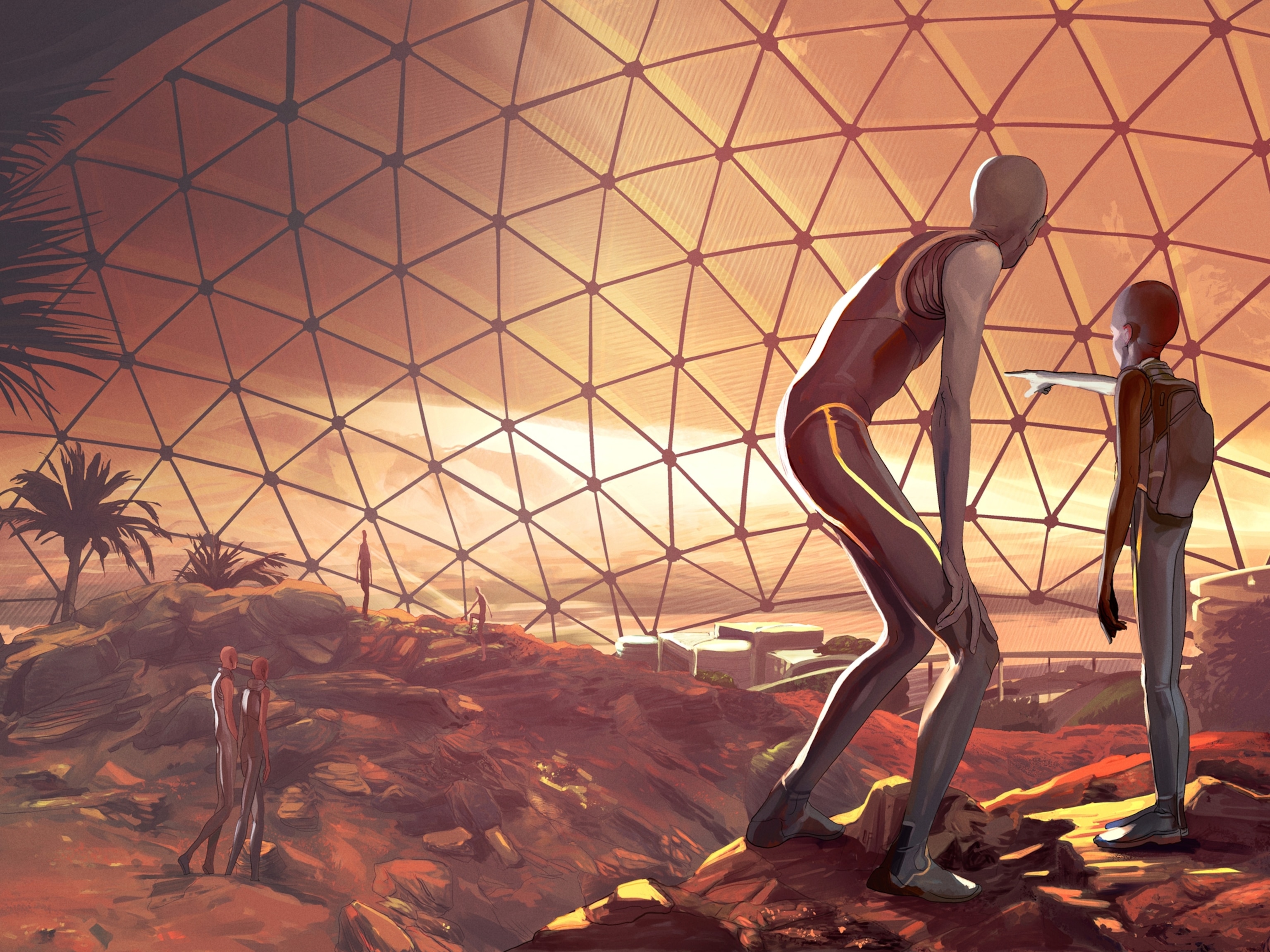

The future of spaceflight—from orbital vacations to humans on Mars
NASA aims to travel to the moon again—and beyond. Here’s a look at the 21st-century race to send humans into space.
Welcome to the 21st-century space race, one that could potentially lead to 10-minute space vacations, orbiting space hotels , and humans on Mars. Now, instead of warring superpowers battling for dominance in orbit, private companies are competing to make space travel easier and more affordable. This year, SpaceX achieved a major milestone— launching humans to the International Space Station (ISS) from the United States —but additional goalposts are on the star-studded horizon.
Private spaceflight
Private spaceflight is not a new concept . In the United States, commercial companies played a role in the aerospace industry right from the start: Since the 1960s, NASA has relied on private contractors to build spacecraft for every major human spaceflight program, starting with Project Mercury and continuing until the present.
Today, NASA’s Commercial Crew Program is expanding on the agency’s relationship with private companies. Through it, NASA is relying on SpaceX and Boeing to build spacecraft capable of carrying humans into orbit. Once those vehicles are built, both companies retain ownership and control of the craft, and NASA can send astronauts into space for a fraction of the cost of a seat on Russia’s Soyuz spacecraft.
SpaceX, which established a new paradigm by developing reusable rockets , has been running regular cargo resupply missions to the International Space Station since 2012. And in May 2020, the company’s Crew Dragon spacecraft carried NASA astronauts Doug Hurley and Bob Behnken to the ISS , becoming the first crewed mission to launch from the United States in nearly a decade. The mission, called Demo-2, is scheduled to return to Earth in August. Boeing is currently developing its Starliner spacecraft and hopes to begin carrying astronauts to the ISS in 2021.
Other companies, such as Blue Origin and Virgin Galactic , are specializing in sub-orbital space tourism. Test launch video from inside the cabin of Blue Origin’s New Shepard shows off breathtaking views of our planet and a relatively calm journey for its first passenger, a test dummy cleverly dubbed “Mannequin Skywalker.” Virgin Galactic is running test flights on its sub-orbital spaceplane , which will offer paying customers roughly six minutes of weightlessness during its journey through Earth’s atmosphere.
With these and other spacecraft in the pipeline, countless dreams of zero-gravity somersaults could soon become a reality—at least for passengers able to pay the hefty sums for the experience.
Early U.S. Spaceflight
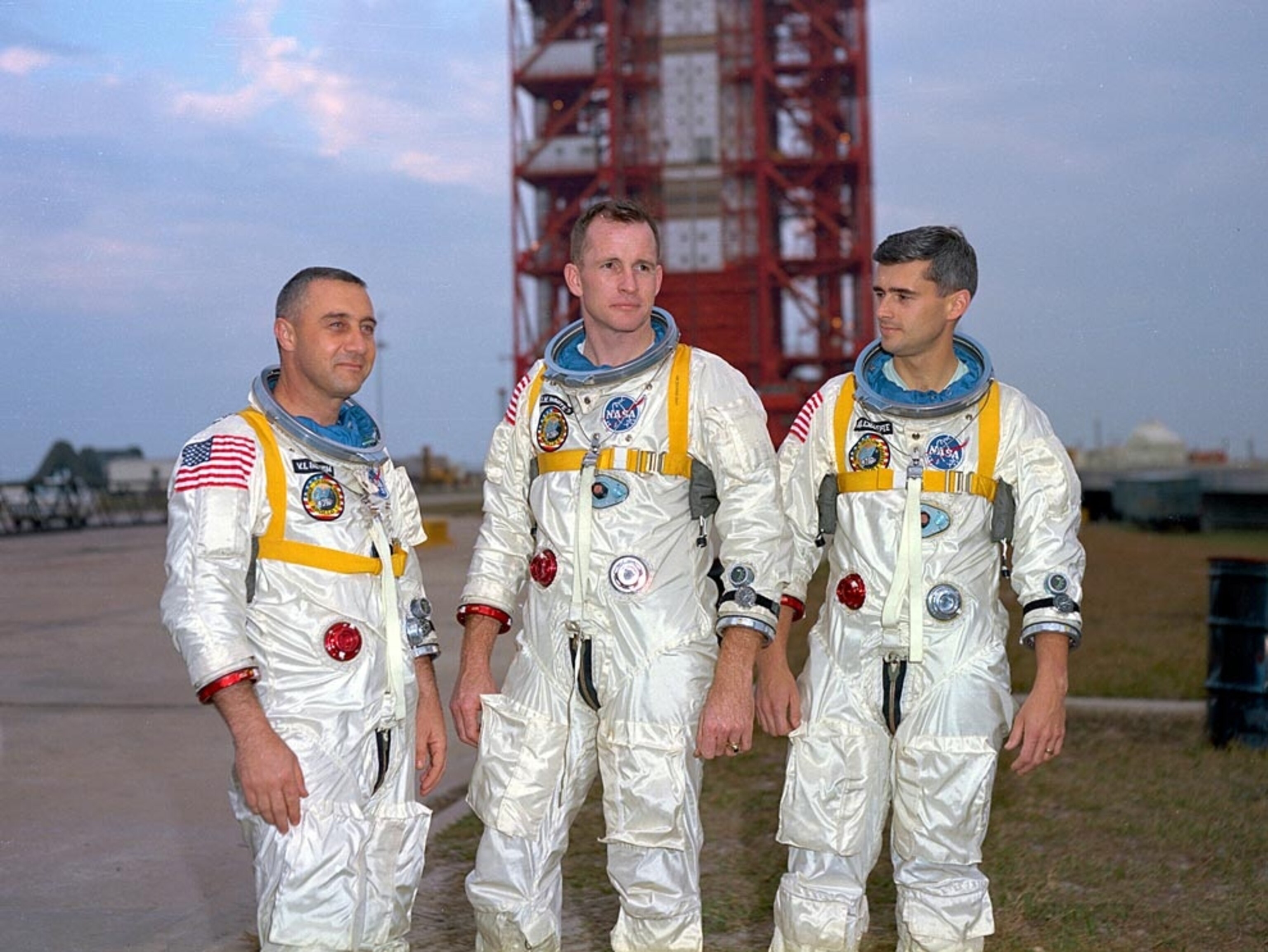
Looking to the moon
Moon missions are essential to the exploration of more distant worlds. After a long hiatus from the lunar neighborhood, NASA is again setting its sights on Earth’s nearest celestial neighbor with an ambitious plan to place a space station in lunar orbit sometime in the next decade. Sooner, though, the agency’s Artemis program , a sister to the Apollo missions of the 1960s and 1970s, is aiming to put the first woman (and the next man) on the lunar surface by 2024.
FREE BONUS ISSUE
Extended lunar stays build the experience and expertise needed for the long-term space missions required to visit other planets. As well, the moon may also be used as a forward base of operations from which humans learn how to replenish essential supplies, such as rocket fuel and oxygen, by creating them from local material.
You May Also Like

In a first, NASA Mars lander feels shockwaves from meteor impacts

SpaceX takes 4 passengers to orbit—a glimpse at private spaceflight’s future

Why go back to the moon? NASA’s Artemis program has even bigger ambitions
Such skills are crucial for the future expansion of human presence into deeper space, which demands more independence from Earth-based resources. And although humans have visited the moon before, the cratered sphere still harbors its own scientific mysteries to be explored—including the presence and extent of water ice near the moon's south pole, which is one of the top target destinations for space exploration .
NASA is also enlisting the private sector to help it reach the moon. It has awarded three contracts to private companies working on developing human-rated lunar landers—including both Blue Origin and SpaceX. But the backbone of the Artemis program relies on a brand new, state-of-the-art spacecraft called Orion .
Archival Photos of Spaceflight

Currently being built and tested, Orion—like Crew Dragon and Starliner—is a space capsule similar to the spacecraft of the Mercury, Gemini, and Apollo programs, as well as Russia’s Soyuz spacecraft. But the Orion capsule is larger and can accommodate a four-person crew. And even though it has a somewhat retro design, the capsule concept is considered to be safer and more reliable than NASA’s space shuttle—a revolutionary vehicle for its time, but one that couldn’t fly beyond Earth’s orbit and suffered catastrophic failures.
Capsules, on the other hand, offer launch-abort capabilities that can protect astronauts in case of a rocket malfunction. And, their weight and design mean they can also travel beyond Earth’s immediate neighborhood, potentially ferrying humans to the moon, Mars, and beyond.
A new era in spaceflight
By moving into orbit with its Commercial Crew Program and partnering with private companies to reach the lunar surface, NASA hopes to change the economics of spaceflight by increasing competition and driving down costs. If space travel truly does become cheaper and more accessible, it’s possible that private citizens will routinely visit space and gaze upon our blue, watery home world—either from space capsules, space stations, or even space hotels like the inflatable habitats Bigelow Aerospace intends to build .
The United States isn’t the only country with its eyes on the sky. Russia regularly launches humans to the International Space Station aboard its Soyuz spacecraft. China is planning a large, multi-module space station capable of housing three taikonauts, and has already launched two orbiting test vehicles—Tiangong-1 and Tiangong-2, both of which safely burned up in the Earth’s atmosphere after several years in space.
Now, more than a dozen countries have the ability to launch rockets into Earth orbit. A half-dozen space agencies have designed spacecraft that shed the shackles of Earth’s gravity and traveled to the moon or Mars. And if all goes well, the United Arab Emirates will join that list in the summer of 2020 when its Hope spacecraft heads to the red planet . While there are no plans yet to send humans to Mars, these missions—and the discoveries that will come out of them—may help pave the way.
Related Topics
- SPACE EXPLORATION
- SCIENCE AND TECHNOLOGY

Second SpaceX megarocket launch ends with another explosion. What happens next?

Why did India land near the moon’s south pole?

U.S. returns to the moon as NASA's Odysseus successfully touches down

In the Arizona desert, NASA prepares for walking on the moon

The moon’s darkest corners are a mystery. This image offers a stunning new glimpse.
- Environment
- Perpetual Planet
- History & Culture
History & Culture
- History Magazine
- Mind, Body, Wonder
- Paid Content
- Terms of Use
- Privacy Policy
- Your US State Privacy Rights
- Children's Online Privacy Policy
- Interest-Based Ads
- About Nielsen Measurement
- Do Not Sell or Share My Personal Information
- Nat Geo Home
- Attend a Live Event
- Book a Trip
- Inspire Your Kids
- Shop Nat Geo
- Visit the D.C. Museum
- Learn About Our Impact
- Support Our Mission
- Advertise With Us
- Customer Service
- Renew Subscription
- Manage Your Subscription
- Work at Nat Geo
- Sign Up for Our Newsletters
- Contribute to Protect the Planet
Copyright © 1996-2015 National Geographic Society Copyright © 2015-2024 National Geographic Partners, LLC. All rights reserved
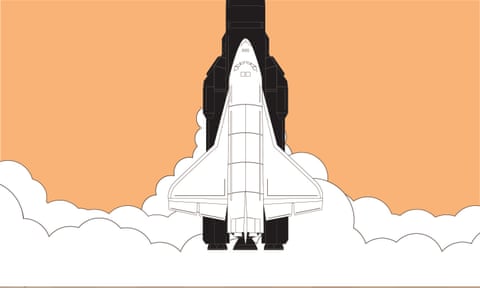
Space: how far have we gone – and where are we going?
Billionaire entrepreneurs are trying to create rockets fit for human travel, while government agencies spend billions furthering their explorations. But we are still a long way off from making our way to the red planet
Who has travelled to space?
Space flight is now a venerable industry. Humanity’s first space explorer, Soviet cosmonaut Yuri Gagarin, orbited around the globe on 12 April 1961, more than half a century ago, when Britain remained a colonial power and people were still using halfpennies to buy their fish and chips.
Since then, more than 550 people have blasted themselves into the deep black abyss, although not all agree on how far up you need to go until you hit space, so there is no internationally accepted figure. Only a 10th of those have been women, in big part due to sexist policies by Nasa and Russia’s Roscosmos space agency.
Where have we been in space?
The Soviet Union pulled ahead with the first space walks, but US president John F Kennedy’s announcement that America would put a man on the moon by the end of the 1960s focused the space race squarely on that goal. Apollo 11 touched down on our dusty grey neighbour on 20 July 1969.
A total of 12 men walked on the moon over the next few years, all Americans, but no one has been back there since 1972. In fact, no one has left the outskirts of the Earth since then.
We imagine astronauts floating in free space or bouncing in moon craters, yet the majority of those lucky enough have instead spun around in low Earth’s orbit – between 99 and a few hundred miles high. That’s where the vast array of communications and navigation satellites live, speeding at thousands of miles an hour to avoid plummeting back to earth.
What do we do there?
Even though we did not go back to deep space, humans have begun to live and work outside the Earth’s atmosphere, often conducting experiments on themselves to determine the effects of weightlessness, or microgravity, on the human body.
By 1986, the Soviet Union had launched the Mir space station. When it eventually fell to Earth (thankfully unoccupied) and burned up, our current space outpost, the International Space Station (ISS), was launched. Since 2000, humans have been living in space constantly. There are three up there at the moment, speeding around the globe once every 90 minutes.
What happens to the body in space?
A lot, and until we properly understand how weightlessness affects humans, we won’t be able to send this era’s pioneers further afield to places such as Mars or wandering asteroids. Scott Kelly, a US former fighter pilot and long-time Nasa astronaut, spent a year bouncing around the cramped capsules of the ISS in an attempt to understand the long-term impact of space flight. He doesn’t hold the record for the most extended foray into the void – that is claimed by Gennady Padalka , who spent two and half years of his life up there on several missions – but the Kelly experiment had a natural advantage over others: he has a twin.
Comparing their bodies throughout, scientists were able to assess how bones, muscles and other parts of the body deteriorate in space. There is even a gym on the ISS where astronauts can keep their muscles – no longer needed to prop them up – from slowly wasting away. But they need to wear a harness to keep them from floating off the treadmill. One big issue is that eye problems develop, but Kelly found his body recovered fast on return. He and his twin seemed in similar shape – good news for future deep space missions.
Which countries have human space programmes?
Only three countries, China, Russia and the US, have human space programmes as it remains prohibitively expensive. However, they have provided lifts for space travellers from 40 countries, including a member of the Saudi royal family and even paying customers, such as South African millionaire Mark Shuttleworth, aged just 28.
How much does it cost to send them up?
Astronomical. The ISS is the most expensive machine ever constructed with a price tag at around $150bn (£115bn). Nasa’s space shuttle programme, which kicked off in the early 1970s by promising safe and affordable access to space, hoped to cost just a few tens of million dollars per launch. But as the shuttle was thrown in the scrapyard in 2011, the agency estimated the total cost at $209bn — nearly $1.6bn per flight.
Following the big fight over the shuttle, which looked fantastic but also restricted space adventuring to Earth’s orbit as well as costing a fortune, the US took a side seat in launches. Most astronauts are now sent by the Russian space agency, which sells round-trip rides on its Soyuz spacecraft for between $21m and $82m .
Is human space flight worth the cost?
Anyone involved in space travel will scoff at this, but it’s a good question, and space agencies often don’t communicate their achievements enough. Almost every sector of human progress has benefited from sending people into space. Just the act of attempting the feat forced scientists to invent new systems. The Apollo guidance computer was a predecessor to the microcomputer, now found in all smartphones. Clothes are more fire-resistant because of research on space fires . Remotely monitoring the health of astronauts has led to revolutionary systems for helping patients on Earth . Diseases behave and develop differently in microgravity, which assists scientists in finding cures.
Others say paying for human space flight pumps money into the economy, arguing that spin-off companies from space research and a growing commercial space industry generates seven to 14 times the cost of missions. And Nasa, the most significant global player, is not spending nearly as much as it used to. About $19bn is spent by the US government on its budget , roughly half a percent of all federal spending. During the early Apollo programme, that was between 4% and 5%.
How strong is space cooperation between countries?
The first space race was part of the chest-beating of the cold war, but since then human space exploration has been more about countries working together than against each other. The ISS is a massive collaboration between five space agencies (Nasa, Roscosmos, Japan’s Jaxa, the pan-European agency ESA and the Canadian Space Agency) and was assembled over a period of 13 years from 1998, slowly adding capsules like Lego.
A big exception to this is China, which has gone it alone with its space ambitions, never sending an astronaut to the ISS. In 2006, Beijing reportedly tested lasers against US imaging satellites in what appeared to be an attempt to blind or damage them, and US lawmakers later banned cooperation between Nasa and China’s state agency.
However, the future of any effective human space flight is certainly likely to be cooperative rather than antagonistic. Since 2011, national spaces agencies in 14 countries have attempted to coordinate their dreams into a single vision. The most recent plan, published in January this year , said they had agreed to “expand human presence into the solar system, with the surface of Mars as a common driving goal”.
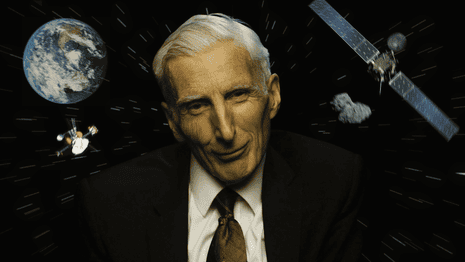
We’re off to the red planet? Hurray!
Don’t start the countdown just yet. To get to Mars, most people in the human space flight community feel we need to first go back to the moon. “It’s the only logical step,” says Ian Crawford, professor of planetary science and astrobiology at Birkbeck, University of London. “I’m all in favour of sending people to Mars, but the technology, competence, the experience – I think it’s still out of reach”.
The moon has several advantages. It’s only three days away, rather than a several-month round trip to Mars, and has been touted as a location for a research station similar to the one in Antarctica. From their celestial laboratory, scientists could study the impact of radiation exposure and near-weightlessness on the body at a closer distance to Earth, but still within deep space, all while preparing for trips further afield.
So to the moon then?
Well. Not quite either. The Global Exploration Roadmap suggests first building a space station as an orbital base from which to send astronauts back and forth to the moon. This will look similar to the ISS except, instead of rushing around the Earth, it will orbit the moon.
Will we ever get to Mars?
It is a mammoth feat and it would be wise to expect serious delays. “Where we go in space is decided by a combination of what people would like to do and the reality of time and budgets,” says Henry Hertzfeld, director of the Space Policy Institute at George Washington University, Washington DC, and a former policy analyst at Nasa. “The idea of putting people on Mars has been around for a long time. If you read the policies, it is clearly a long-term vision without a date. But we probably are still lacking the technology to keep people for a long time in deep space.”
Who are the new contenders in human space flight?
The US and Russia have been giving way to new players. In 2003, China became the third country to put a person into orbit and India plans to follow in 2022. But the sector-changing impact is undoubtedly coming from the private space.
In what is being coined the “billionaire’s space race”, Elon Musk, founder of Telsa electric cars, Amazon CEO Jeff Bezos and Virgin boss Richard Branson all want to send private citizens to space. Their companies, SpaceX, Blue Origin and Virgin Galactic , are set on making human space travel cheaper.
They join a handful of commercial space flight companies that already work as contractors for national space agencies. Aerospace industry titans Boeing and Lockheed Martin send heavy launchers into space, but that costs at least $350m per launch – several times more expensive than SpaceX’s new $90m Falcon Heavy system.
SpaceX has around $10bn worth of launches already booked and saves costs through reusable spacecraft, where even the rocket boosters land themselves back on the ground and can be dusted off for reuse.
And while it is looking increasingly likely that the ISS will be defunded in the next decade, several private ventures are considering either taking over or rebuilding their own space stations.
What’s next?
As government agencies prioritise the moon, others are looking straight at Mars. Musk has said his life goal is to create a thriving Mars colony as a fail-safe for humanity in case of a catastrophic event on Earth, such as a nuclear war or Terminator-style artificial intelligence coup. For this, SpaceX is developing the Big Falcon Rocket (BFR), which he claims could send crewed flights to the red planet by mid-2020.
Musk says the BFR is partly inspired by Tintin’s rocket and will be the biggest ever made at close to 40 storeys high and capable of ferrying as many as 100 passengers per trip, depending on how much luggage they want to put in the hold.
As well as a healthy satellite launch business, SpaceX is raising money by selling tickets on the BFR for a trip, some would say a jolly, around the moon. Yusaku Maezawa , a Japanese fashion billionaire and art collector, is funding such a mission slated for 2023 and says he is going to invite artists with him for the week-long trip to re-engage the public in the wonder of our universe.
Further reading
An astronaut’s guide to life on Earth, Chris Hadfield
To space and back, Sally Ride
The Right Stuff, Tom Wolfe
The Martian, Andy Weir
Endurance: A year in space, a lifetime of discovery, Scott Kelly
- The briefing
- Richard Branson
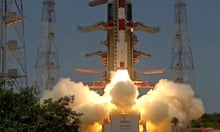
Aditya-L1: India’s solar mission reaches sun’s orbit

New images from Mars will guide search for evidence of ancient life, says study

India launches space mission to the sun – video
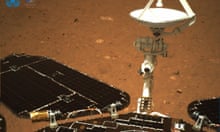
China’s Mars rover drives across planet a week after landing

India launches space mission to the sun a week after moon landing

Nasa’s Mars helicopter in first powered, controlled flight on another planet

Nasa preparing to attempt first controlled flight on another world

India’s rover takes walk on the moon after frenzied celebrations

India’s south pole moon landing is big business for global space race

'Dare mighty things': hidden message found on Nasa Mars rover parachute
Most viewed.
Thank you for visiting nature.com. You are using a browser version with limited support for CSS. To obtain the best experience, we recommend you use a more up to date browser (or turn off compatibility mode in Internet Explorer). In the meantime, to ensure continued support, we are displaying the site without styles and JavaScript.
- View all journals
- Explore content
- About the journal
- Publish with us
- Sign up for alerts
- Published: 22 February 2001
Humans in space
- Ronald J. White 1 &
- Maurice Averner 2
Nature volume 409 , pages 1115–1118 ( 2001 ) Cite this article
5487 Accesses
228 Citations
115 Altmetric
Metrics details
Many successful space missions over the past 40 years have highlighted the advantages and necessity of humans in the exploration of space. But as space travel becomes ever more feasible in the twenty-first century, the health and safety of future space explorers will be paramount. In particular, understanding the risks posed by exposure to radiation and extended weightlessness will be crucial if humans are to travel far from Earth.
This is a preview of subscription content, access via your institution
Access options
Subscribe to this journal
Receive 51 print issues and online access
185,98 € per year
only 3,65 € per issue
Buy this article
- Purchase on Springer Link
- Instant access to full article PDF
Prices may be subject to local taxes which are calculated during checkout
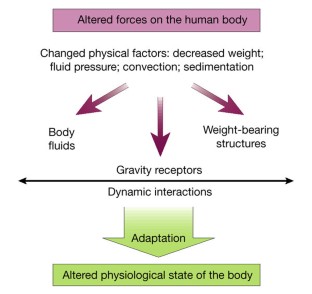
Similar content being viewed by others

Towards sustainable human space exploration—priorities for radiation research to quantify and mitigate radiation risks

Selected discoveries from human research in space that are relevant to human health on Earth
Planetary extravehicular activity (eva) risk mitigation strategies for long-duration space missions.
Hoffman, S. J. & Kaplan, D. L. (eds) Human Exploration of Mars: The Reference Mission of the NASA Mars Exploration Study Team 〈 http://www-sn.jsc.nasa.gov/marsref/contents.html 〉 (Lyndon B. Johnson Space Center, Houston, TX, 1997).
Google Scholar
Space Studies Board, National Research Council. Scientific Opportunities in the Human Exploration of Space (National Academy Press, Washington DC, 1994).
Special Report: Sending Astronauts to Mars 〈 http://www.sciam.com/2000/0300issue/0300currentissue.html 〉 Sci. Am. 97 (March 2000).
Nicogossian, A., Huntoon, C. & Pool, S. (eds) Space Physiology and Medicine 3rd edn (Lea and Febiger, Philadelphia, 1994).
Morey-Holton, E. R., Whalen, R. T., Arnaud, S. B. & Van Der Meulen, M. C. in Handbook of Physiology. Section 4: Environmental Physiology (eds Fregly, M. J. & Blatteis, C. M.) 691–719 (American Physiological Society, New York, 1996).
Grigoriev, A. I. et al. Clinical and physiological evaluation of bone changes among astronauts after long-term space flights. Aviakosm Ekolog Med. 32 , 21–25 (1998). [In Russian.]
CAS PubMed Google Scholar
Vico, L. et al. Effects of long-term microgravity exposure on cancellous and cortical weight-bearing bones of cosmonauts. Lancet 355 , 1607–1611 (2000).
Article CAS Google Scholar
Smith, S. M. et al. Calcium metabolism before, during and after a 3-month spaceflight: kinetic and biochemical changes. Am. J. Physiol. 277 , R1–R10 (1999).
Buckey, J. C. et al. Orthostatic intolerance following spaceflight. J. Appl. Physiol. 81 , 7–18 (1996).
Article Google Scholar
Wautenpaugh, D. E. & Hargens, A. R. in Handbook of Physiology. Section 4: Environmental Physiology (eds Fregly, M. J. & Blatteis, C. M.) 631–674 (American Physiological Society, New York, 1996).
Reyes, C., Freeman-Perez, S. & Fritsch-Yelle, J. Orthostatic intolerance following short and long duration spaceflight. FASEB J. 13 , A1048 (1999).
Fritsch-Yelle, J. M. et al. An episode of ventricular tachycardia during long-duration spaceflight. Am. J. Cardiol. 81 , 1391–1392 (1998).
Levine, B. D., Zuckerman, J. H. & Pawelczyk, J. A. Cardiac atrophy after bed-rest deconditioning: a non-neural mechanism for orthostatic intolerance. Circulation 96 , 517–525 (1997).
Oman, C. M., Lichtenberg, B. K., Money, K. E. & McCoy, R. K. MIT/Canadian vestibular experiments on the Spacelab-1 mission: space motion sickness: symptoms, stimuli, and predictability. Exp. Brain Res. 64 , 316–334 (1986).
Lackner, J. R. & DiZio, P. Human orientation and movement control in weightless and artificial gravity environments. Exp. Brain Res. 130 , 2–26 (2000).
Reschke, M. F., Bloomberg, J. J., Harm, D. K. & Parker, D. E. in Space Physiology and Medicine 3rd edn (eds Nicogossian, A. E., Huntoon, C. L. & Pool, S. L.) 261–285 (Lea and Febiger, Philadelphia, 1994).
Young, L. R., Oman, C. M., Watt, D. G. D., Money, K. E. & Lichtenberg, B. K. Spatial orientation in weightlessness and readaptation to Earth's gravity. Science 225 , 205–208 (1984).
Article ADS CAS Google Scholar
Daunton, N. G. in Handbook of Physiology. Section 4: Environmental Physiology (eds Fregly, M. J. & Blatteis, C. M.) 765–783 (American Physiological Society, New York, 1996).
Baldwin, K. M. Effect of spaceflight on the functional, biochemical, and metabolic properties of skeletal muscle. Med. Sci. Sports Exerc. 28 , 983–987 (1996).
Edgerton, V. R. et al. Human fiber size and enzymatic properties after 5 and 11 days of spaceflight. J. Appl. Physiol. 78 , 1733–1739 (1995).
Fitts, R. H., Riley, D. R. & Widrick, J. J. Physiology of a microgravity environment. Invited review: Microgravity and skeletal muscle. J. Appl. Physiol. 89 , 823–839 (2000).
Edgerton, V. R. & Roy, R. R. in Handbook of Physiology. Section 4: Environmental Physiology (eds Fregly, M. J. & Blatteis, C. M.) 721–763 (American Physiological Society, New York, 1996).
Czeisler, C. A. & Khalsa, S. B. in Principles and Practice of Sleep Medicine 3rd edn (eds Kryger, M. H., Roth, T. & Dement, W. C.) 353–375 (Saunders, Philadelphia, 2000).
Gündel, A., Polyakov, V. V. & Zulley, J. The alteration of human sleep and circadian rhythms during spaceflight. J. Sleep Res. 6 , 1–8 (1997).
Taylor, G. R. Overview of spaceflight immunology studies. J. Leukoc. Biol. 54 , 179–188 (1993).
Gmünder, F. K. & Cogoli, A. in Handbook of Physiology. Section 4: Environmental Physiology (eds Fregly, M. J. & Blatteis, C. M.) 799–814 (American Physiological Society, New York, 1996).
Kanas, N. Psychiatric issues affecting long duration space missions. Aviat. Space Environ. Med. 69 , 1211–1216 (1998).
Ellis, S. R. Collision in space. Ergon. Design 8 , 4–9 (2000).
Connors, M. M., Harrison, A. A. & Akins, F. R. Living Aloft (NASA, Washington, 1985).
Palinkas, L., Gunderson, E. K. E., Holland, A. W., Miller, C. & Johnson, J. C. Predictors of behavior and performance in extreme environments: the Antarctic space analogue program. Aviat. Space Environ. Med. 71 , 619–625 (2000).
Schimmerling, W. Radiobiological problems in space: an overview. Radiat. Environ. Biophys. 31 , 197–203 (1992).
Nelson, G. A. in Handbook of Physiology. Section 4: Environmental Physiology (eds Fregly, M. J. & Blatteis, C. M.) 785–798 (American Physiological Society, New York, 1996).
Space Studies Board, National Research Council. Radiation Hazards to Crews of Interplanetary Missions (National Academy Press, Washington DC, 1996).
Vazquez, M. E. Neurobiological problems in long-term deep space flights. Adv. Space Res. 22 , 171–183 (1998).
Azzam, E. I., de Toledo, S. M. & Little, J. B. Direct evidence for the participation of gap junction-mediated intercellular communication in the transmission of damage signals from α-particle irradiated to nonirradiated cells. Proc. Natl Acad. Sci. USA 98 , 473–478 (2001).
ADS CAS PubMed Google Scholar
Kadhim, M. A. et al. Transmission of chromosomal instability after plutonium alpha-particle irradiation. Nature 355 , 738–740 (1992).
Boyd, C. A. R. & Noble, D. (eds) The Logic of Life: The Challenge of Integrative Physiology (Oxford Univ. Press, Oxford, 1993).
Download references
Acknowledgements
The authors acknowledge many helpful discussions with R. J. Cohen, J. F. Dicello, D. F. Dinges, C. Golden, A. R. Kennedy, J. I. Leonard, C. M. Oman, R. J. Schwartz and J. R. Shapiro. Support for the preparation of this paper was provided by NASA, both directly and through Cooperative Agreement NCC 9-58 with the National Space Biomedical Research Institute.
Author information
Authors and affiliations.
National Space Biomedical Research Institute and Baylor College of Medicine, One Baylor Plaza, NA-425, Houston, 77030, Texas, USA
Ronald J. White
NASA Ames Research Center, Moffett Field, California, 94035-1000, USA
Maurice Averner
You can also search for this author in PubMed Google Scholar
Rights and permissions
Reprints and permissions
About this article
Cite this article.
White, R., Averner, M. Humans in space. Nature 409 , 1115–1118 (2001). https://doi.org/10.1038/35059243
Download citation
Issue Date : 22 February 2001
DOI : https://doi.org/10.1038/35059243
Share this article
Anyone you share the following link with will be able to read this content:
Sorry, a shareable link is not currently available for this article.
Provided by the Springer Nature SharedIt content-sharing initiative
This article is cited by
Research and development of cell culture devices aboard the chinese space station.
Microgravity Science and Technology (2023)
Modulation of biological motion perception in humans by gravity
Nature Communications (2022)
Scaffold-based bone tissue engineering in microgravity: potential, concerns and implications
- Federico Mochi
- Elisa Scatena
- Costantino Del Gaudio
npj Microgravity (2022)
Cardiovascular autonomic nervous system responses and orthostatic intolerance in astronauts and their relevance in daily medicine
- Jens Jordan
- Ulrich Limper
Neurological Sciences (2022)
By submitting a comment you agree to abide by our Terms and Community Guidelines . If you find something abusive or that does not comply with our terms or guidelines please flag it as inappropriate.
Quick links
- Explore articles by subject
- Guide to authors
- Editorial policies
Sign up for the Nature Briefing newsletter — what matters in science, free to your inbox daily.
March 6, 2020
Do We Really Need to Send Humans into Space?
Automated spacecraft cost far less; they’re getting more capable every year; and if they fail, nobody dies
By Donald Goldsmith & Martin Rees
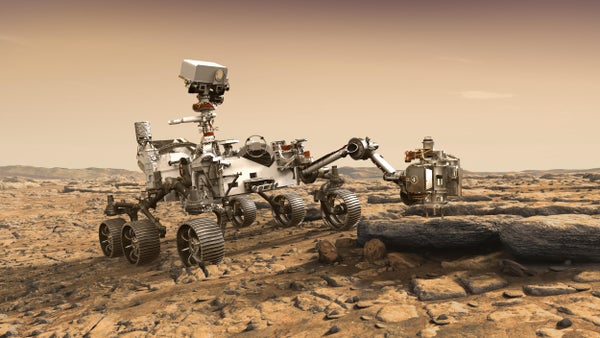
The Mars 2020 Rover.
NASA and JPL-Caltech
This article was published in Scientific American’s former blog network and reflects the views of the author, not necessarily those of Scientific American
What future lies ahead for humans in space? Last year, the 50th anniversary of the first moon landing found a host of private and governmental projects that aim to send astronauts far beyond the near-Earth orbits that have limited human space exploration since 1972. China, which landed the first spacecraft on the lunar far side in 2019, has plans to place astronauts to the moon. India, which crashed a lander on the moon in 2019 , dreams of doing likewise. Russia, which doesn’t seem to have much of an ongoing astronaut program, still provides the rockets and launch facilities that provide astronauts with access to the International Space Station. The Trump administration proposes to create a lunar base as a key step in sending astronauts to Mars. Elon Musk and Jeff Bezos have spent large sums on future human space missions. Indeed, Musk has already created a thriving rocket business, which NASA uses to resupply the Space Station, 250 miles above Earth’s surface.
What benefits will flow from these efforts to send humans much farther into space? As children of the 1950s, we were thrilled and inspired by the satellites that began to circle Earth in 1957, the first astronauts—who followed similar paths in the 1960s and made the first spacewalk in 1965—and what turned out to be the culmination of human spaceflight: NASA’s six astronaut explorations of the lunar surface from 1969 through 1972. Beyond any scientific returns, these efforts elevated the human spirit, reaching a peak on July 20, 1969, when Neil Armstrong set humanity’s first footprints on the moon. During the 1960s, we became astronomers with a deep passion to explore the cosmos.
But the past five decades have taught a clear lesson about how best to explore the cosmos. People venturing into space are fragile: They require a continuous supply of oxygen, water, food and shelter. They must endure long intervals of weightlessness. Their physical capabilities remain constant across generations. And their loss, when it occurs, casts a pall over our would-be joy of identifying with their exploration. In contrast, automated spacecraft require only a power supply. They cost far less than humans do, and we know how to improve them every year. And if they fail, we lose only dollars and scientific results.
On supporting science journalism
If you're enjoying this article, consider supporting our award-winning journalism by subscribing . By purchasing a subscription you are helping to ensure the future of impactful stories about the discoveries and ideas shaping our world today.
Since the first moon landing, we have sent several hundred probes throughout the solar system, from innermost Mercury to Arrokoth (previously nicknamed “Ultima Thule”), a planetesimal orbiting far beyond Pluto. Spacecraft have landed on Mercury, Venus and Mars, spent years in orbit around Jupiter and Saturn, and surveyed Uranus and Neptune. And the Japanese Hayabusa2 spacecraft will soon pass by Earth to release a capsule with material from the asteroid Ryugu, one of the oldest members of the solar system. Multiple lunar missions have mapped the moon’s far side, detected the gravitational anomalies that make the “man in the moon” always face Earth and discovered huge amounts of water frozen in the soil at the lunar poles.
Limited to low-Earth orbits, astronauts have basically performed extensive experiments on the hazards and requirements of living in space-bound habitats. By far, the finest achievement of humans in space has been the five servicing missions that allowed astronauts to repair instruments on the Hubble Space Telescope, which orbits Earth at the maximum altitude that the now defunct Space Shuttle could carry it to. Astronomers, who cheered these efforts more than anyone, remained deeply aware of an ironic fact: Hubble suffers from close proximity to our planet, whose reflected and emitted radiation greatly hampers the telescope’s ability to peer clearly and deeply into space. The James Webb Space Telescope, scheduled to supplant the now creaky Hubble next year, will be directed to the much more astronomically favored “L2 point” (for second Lagrange point), a million miles from Earth. Spacecraft at L2 can easily maintain a stable orbit, avoiding the slow drift that gravitational tugs from the sun and moon produce elsewhere. Astronomers have already maintained spacecraft at L2 to observe the cosmos in infrared, ultraviolet and x-radiation, unaffected by interference from our own planet.
Why, then, should we not expect future astronauts, if called upon, to repair one of the numerous space-borne instruments to be sent to L2? An astronaut expedition to repair one of these great observatories at L2 would involve at least as much complexity as a landing on the moon—and possibly a greater expense than the creation and launch of a new and improved observational platform. In fact, the missions to repair the Hubble telescope cost significantly more than replacing it with a newer and better version. But these missions elevated our spirits, whereas writing off the telescope would have been a profound downer—a reminder that public opinion, which would have scorned the latter action while celebrating the former, understandably plays a crucial role in determining what our government chooses to do.
The contrast between astronaut and automated space missions will grow ever stronger as we improve our miniaturization, virtual-reality and artificial-intelligence capabilities. Today a trained geologist on the moon can perform as well as a robotic explorer, but the future of geologic investigation of other worlds lies with highly improved versions of our Mars rovers. These explorers will deploy numerous tools to probe rocks and minerals, using a memory equal—and soon superior—to any human’s. They will traverse the lunar or Martian surface for decades, continuously learning about the topography, seismographic activity and distribution of geologic strata in bulk and in detail. Conceptually similar robots will eventually be able to repair spacecraft at the L2 point, while others could construct complex structures in space, including an array of radio telescopes on the radio-quiet far side of the moon.
The fundamental issue of sending humans into the cosmos asks not how easily astronauts can repair instruments in deep space, how quickly they can land on the moon and construct a base there, or why they should travel to Mars and attempt to create a habitat there. Instead it queries, Why should we do any of this? Four major motivations deserve special attention as answers to this question.
Uplifting the human spirit . Sending humans into space adds glory to our lives. Overcoming the manifold challenges to long-term spaceflight inspires and delights us. Almost everyone naturally responds to heroic accomplishments, and many of us would regard a human landing on Mars as a paramount achievement of our species. But to many scientists, and to some among the public, such potent reactions fail to justify the costs and dangers of these missions.
We should note that several other motivations lie behind the push for astronaut expeditions to our celestial neighbors. These include the desire to outdo our rivals, the belief that space offers an eventual refuge from a debilitated Earth and an eagerness to exploit raw materials in the nearby solar system. Each of these arguments, in our opinion, favor expeditions not with humans but with our ever improved spacecraft and robot explorers—at least until the habitats for the refuge of a chosen population are ready.
National pride . The cold war argument that the Russians could “seize the high ground” by establishing a lunar base never made sense, because any nation seeking to use space to launch weapons would attempt to do so close to Earth, not from a quarter-million miles away. There remains the pride that a nation may feel from sending the first humans to other worlds, as when President Donald Trump exalts a future “when American astronauts will plant our beautiful Stars and Stripes on the surface of Mars,” adding the pride of ownership to the thrill of human achievement.
Human survival . Shortly before his death in 2018, Stephen Hawking stated that “spreading out may be the only thing that saves us from ourselves. I am convinced that humans need to leave Earth.” More recently, Bezos has said that humans need space travel because “we are in the process of destroying this planet.” Among other outcomes, he envisions giant space colonies that would each allow millions of people to live in space.
To their enthusiasts, giant space colonies and human habitats on Mars offer not only sites to develop a better society but also places where we may modify humans themselves, partly for adaptation to the lower gravity on Mars or, in many scenarios, to the artificial gravitational force produced within the enormous rotating wheel of a million-person “posthuman environment,” where genetic engineering could attempt to reduce diseases and prolong human life.
Such future plans appeal to those who see Earth’s future as deeply uncertain or even hopeless. A moment’s thought, however, tends to reveal that (a) the notion that we can learn from our errors on Earth in order to survive in space involves pie-in-the-sky optimism and (b) the billions of people to be left behind deserve greater consideration. If we can’t solve humanity’s problem on our home planet, we seem highly unlikely to be able to do so by establishing ourselves in space.
Raw materials . Although less cited in the wider world, a great incentive for reaching nearby solar system objects springs from an old-fashioned, solid desire: the quest for raw materials for profit. One of the asserted justifications for sending humans back to the moon focuses on their potential for harvesting helium-3, a rare isotope of helium. Unlike those of helium-4, the far more common stable isotope of the element, helium-3 nuclei will fuse readily once they reach a sufficiently high temperature. Because this fusion releases large amounts of energy but no radioactive by-products, helium-3 nuclei could provide an almost ideal nuclear fuel. On Earth, helium-3 nuclei furnish only about one one-millionth of already scarce helium nuclei, but their relative abundance in lunar soil rises 100 times higher. Visionaries propose a future society that runs on helium-3 nuclei from the moon, which contains enough of these nuclei to provide many centuries of the world’s current power consumption.
The asteroids likewise offer a road to wealth. Although most asteroids have a composition that resembles Earth’s, a few of them consist largely of metals such as iron, nickel and cobalt—together with a much smaller amount of silver, gold and platinum. A metal-rich asteroid that is only the size of a house would contain a million pounds of metal, including 100 pounds of platinum, gold and other rare metals. We can imagine future space missions that use the more abundant minerals for the construction of mining colonies but that draw the bulk of their profits from the return of the most valuable metals to Earth.
Do any existing international agreements deal with these issues? In 1967 several countries ratified the United Nations’ Outer Space Treaty, whose full formal title includes “the Moon and Other Celestial Bodies.” The 100-plus nations that ratified this treaty include all those likely to carry out space exploration during the coming decades (with the possible exception of Iran, which signed the treaty but did not ratify it).
The treaty’s key provisions forbid placing weapons of mass destruction on the moon, in orbit or elsewhere in outer space. They also state that celestial bodies are to be used exclusively for peaceful purposes and are “not subject to national appropriation” by any means and that all parties will follow international law in their activities relating to the exploration and use of outer space. One may easily see that space lawyers, who have a growing future ahead of them, can dispute the term “national appropriation,” which hardly seems to rule out operations by private parties that do not add directly to a nation’s wealth. Furthermore, the current geopolitical climate suggests the treaty’s terms might not fully govern the actions of any state or private party.
Let’s examine the arguments in favor of sending humans into space in the in reverse order from which we have posed them.
Raw materials and the transformation of planetary surfaces . In 2015 the U.S. Congress passed legislation, informally known as the SPACE Act, that denies any assertion of authority over cosmic objects but promotes the right of U. S. citizens (which naturally includes corporations) to engage in the “commercial recovery of space resources free from harmful interference ... subject to authorization and continuing supervision by the Federal Government.” The marvelous word “recovery,” common in mineral-extraction circles, tends to hide the obvious impacts of such activities. On a moral basis, do we, as humans, U.S. citizens, or private individuals or corporations, possess the right to alter or even destroy the landscape of other celestial objects? To some, the answer is obvious: Of course we do. And the resources of these worlds belong to those who can first exploit them.
The opposing moral argument begins with the thought that humans ought not to embark on these activities lightly, because whatever we do may not be capable of being repaired. To scientists, the gravest threat from the “recovery” of other worlds’ resources resides in the possibility that human activities can forever cloud our knowledge of the origin and distribution of life in the solar system. Wherever we land, we inevitably leave behind traces of our own forms of life. NASA has worried about this problem ever since the first lunar probes and has taken pains, which the agency knows can never be entirely successful, to avoid the biological contamination of other worlds. Large-scale extraction efforts, however, could never proceed without this contamination. Even the moon or asteroids, hostile to life though they now are, may contain traces of past biological activity.
For colonies on Mars—even “harmless” ones whose purpose is purely exploration—the problem increases steeply: Most experts agree that life probably existed on Mars when water ran freely over its surface and may that it may yet survive in underground pools. The discovery of life on a nearby world should reveal, through comparison of its DNA or equivalent material, whether life in the solar system originated separately or transferred itself from world to world onboard meteoroids or asteroids. If we find Earth-like organisms on Mars, our ability to discriminate will be lost if we cannot tell whether this transfer occurred in recent years or eons before.
Advocates of exploiting other worlds often point to a glorious future on Mars after engineers have “terraformed” the planet to produce more Earth-like conditions. By releasing sufficiently large amounts of carbon dioxide that currently reside in rocks and in Mars’s modest polar caps, along with other gases even better at trapping heat, we could produce a “greenhouse effect” that would raise the planet’s surface temperature and increase its atmospheric pressure to the point that liquid water could once again flow over the Martian surface. Those who oppose reworking an entire planet begin with a hard look at what humans have done to “terraform” Earth.
Human survival . Aside from the immense difficulties of creating sustainable, million-person colonies (required for sufficient long-term genetic variation), any lunar or planetary colonists will bring the same human attributes that have caused problems on Earth. In addition, plans to leave behind eight billion of their fellow humans on a dying planet might produce unrest sufficient to derail the project.
National pride . One need not be a one-worlder to recognize that national competition to explore nearby objects—and, even more so, to exploit space resources—fails to furnish a sustainable basis for rational exploration. By exporting our Earthly competition into space, we increase the likelihood of conflict in both venues.
Uplifting the human spirit . Debating the wisdom of sending humans into space inevitably returns to the immense boost that humanity will receive from tracking astronauts as they explore other worlds. Undeniable though these emotions may be, they hardly settle the issue. What remains is the key question of whether this spiritual uplift so far surpasses any news that may be sent by spacecraft that humans in space must be worth the expense and the danger of contaminating other worlds, along with encouraging the exploitation of these worlds for economic gain.
Approximately 3 percent of astronauts who have begun a journey into space have not survived.” Although our increased understanding of how to launch and return spacecraft safely may reduce this percentage, “space tourism”—a phrase that suggests that ordinary people can enjoy the thrill of travel around the Earth or even farther—conceals the actual risks. Space travelers will long resemble stunt motorcyclist Evel Knievel more than they do Jules Verne’s fictional adventurer Phileas Fogg .
Those who feel that our automated planetary explorers can never come close to the human experience in uplifting our spirits may find a modest rebuttal in our robotic explorers on Mars, which have commanded widespread attention and even some human identification during their years on the red planet. NASA’s Opportunity rover, for example, spent more than 15 years on Mars and traversed complex topography for more than two dozen miles, at a price tag that is almost certainly less than 1 percent of what a comparable human expedition would cost today. In addition, we may reasonably expect that popular culture will expand our identification with our marvelous spacefaring machines.
Private expeditions . This discussion has assumed the existence of a forum to debate the pros and cons of humans in space and reach a (more or less) logical conclusion. What of the superrich who operate free from such constraints? The exploitation of raw materials in space offers a wide range of construction, destruction and confrontation among private parties and corporations. If these parties choose to act, who can stop them? Should we try? Human history shows that no scarcity of volunteers will arrive, including those who would gladly gain fame from being among the first to land, for example, on Mars, without any prospect of a return journey.
What, then, should be done? Should members of the public confront these arguments and attempt to influence governmental decisions? Do we want to regulate space adventuring—and if so, how? Or do we prefer to let the “space frontier” work itself out? Private individuals, though aware of the considerations we have raised, need answer to none but themselves in their spacefaring endeavors. Statements by Musk and Bezos testify to deep beliefs in human activities in space, which they apparently regard as not even requiring justification. Musk has so deeply embraced the belief that only humans in space can fulfill the human desire to explore other worlds that he has tweeted “nuke Mars!” to express his plan to use nuclear weapons in order to release carbon dioxide stored in the Martian soil and polar caps in order to create a greenhouse effect to warm the planet.
Whether the exploits proposed by Musk and Bezos will inspire us to greater efforts on Earth—or cause us to imagine that we can forget about problems on our planet—remains an open question. Because little hope of curtailing these endeavors exists, we may do well to let them advance as the masters of space would wish, believing, as we always must, that humans will soon see the wisest way to proceed.
None of our discussion and suggestions looks beyond the next few decades, a sufficiently long stretch of time to beware the accuracy of our predictive abilities. If human civilization successfully overcomes its current problems and achieves long-term stability, we shall certainly send people to the other worlds in our solar system. If we discover much faster means of propulsion or find a way to prolong human life or invent a means of inducing limitless suspension of life during a multicentury journey, we can send humans to the nearest stars and their planetary systems. If we create human colonies in space, their inhabitants might undergo evolutionary changes that make them more fit for space travel. If, as is likely to happen soon, we can manipulate the human genome as we like, we could manufacture a new set of beings designed for space travel.
None of these “ifs” tells us much about what we should do within the next few years. Nor do they rule out machines as superior to whatever humans we may invent. Designs now exist for spacecraft that include photography and radio communication equipment, but which weigh only one-thirtieth of an ounce. These could be accelerated by lasers to 20 percent of the speed of light and reach the closest stars within a couple of decades. This concept leads to the mind-bending, though hardly impossible, notion that eventually we can send human consciousness, downloaded from individuals or created by artificial intelligence, to nanoexplorers that will range through the vastness of space in the name of humanity. Possibly, they may meet and interact with similar probes from an array of other civilizations.
Meanwhile we would do well to ponder the current advantages that our automated explorers of realms close to Earth maintain over their human counterparts.
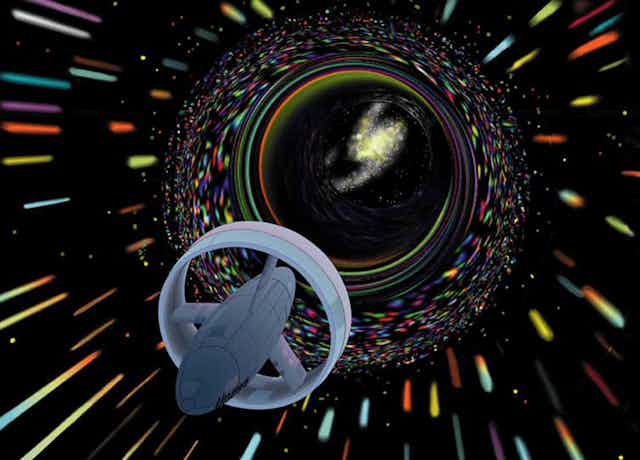
Warp drives: Physicists give chances of faster-than -light space travel a boost
Associate Professor of Physics, Oklahoma State University
Disclosure statement
Mario Borunda does not work for, consult, own shares in or receive funding from any company or organisation that would benefit from this article, and has disclosed no relevant affiliations beyond their academic appointment.
Oklahoma State University provides funding as a member of The Conversation US.
View all partners
The closest star to Earth is Proxima Centauri. It is about 4.25 light-years away, or about 25 trillion miles (40 trillion km). The fastest ever spacecraft, the now- in-space Parker Solar Probe will reach a top speed of 450,000 mph. It would take just 20 seconds to go from Los Angeles to New York City at that speed, but it would take the solar probe about 6,633 years to reach Earth’s nearest neighboring solar system.
If humanity ever wants to travel easily between stars, people will need to go faster than light. But so far, faster-than-light travel is possible only in science fiction.
In Issac Asimov’s Foundation series , humanity can travel from planet to planet, star to star or across the universe using jump drives. As a kid, I read as many of those stories as I could get my hands on. I am now a theoretical physicist and study nanotechnology, but I am still fascinated by the ways humanity could one day travel in space.
Some characters – like the astronauts in the movies “Interstellar” and “Thor” – use wormholes to travel between solar systems in seconds. Another approach – familiar to “Star Trek” fans – is warp drive technology. Warp drives are theoretically possible if still far-fetched technology. Two recent papers made headlines in March when researchers claimed to have overcome one of the many challenges that stand between the theory of warp drives and reality.
But how do these theoretical warp drives really work? And will humans be making the jump to warp speed anytime soon?
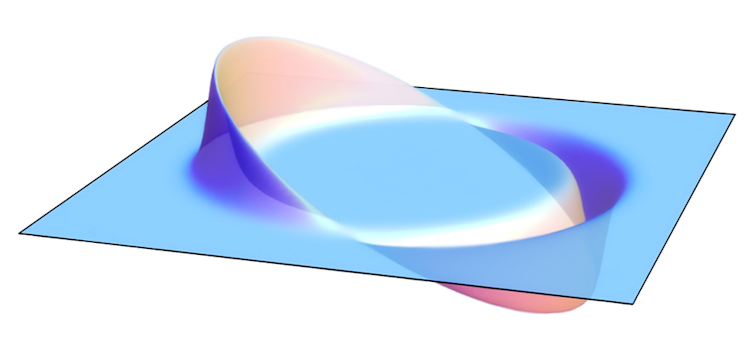
Compression and expansion
Physicists’ current understanding of spacetime comes from Albert Einstein’s theory of General Relativity . General Relativity states that space and time are fused and that nothing can travel faster than the speed of light. General relativity also describes how mass and energy warp spacetime – hefty objects like stars and black holes curve spacetime around them. This curvature is what you feel as gravity and why many spacefaring heroes worry about “getting stuck in” or “falling into” a gravity well. Early science fiction writers John Campbell and Asimov saw this warping as a way to skirt the speed limit.
What if a starship could compress space in front of it while expanding spacetime behind it? “Star Trek” took this idea and named it the warp drive.
In 1994, Miguel Alcubierre, a Mexican theoretical physicist, showed that compressing spacetime in front of the spaceship while expanding it behind was mathematically possible within the laws of General Relativity . So, what does that mean? Imagine the distance between two points is 10 meters (33 feet). If you are standing at point A and can travel one meter per second, it would take 10 seconds to get to point B. However, let’s say you could somehow compress the space between you and point B so that the interval is now just one meter. Then, moving through spacetime at your maximum speed of one meter per second, you would be able to reach point B in about one second. In theory, this approach does not contradict the laws of relativity since you are not moving faster than light in the space around you. Alcubierre showed that the warp drive from “Star Trek” was in fact theoretically possible.
Proxima Centauri here we come, right? Unfortunately, Alcubierre’s method of compressing spacetime had one problem: it requires negative energy or negative mass.

A negative energy problem
Alcubierre’s warp drive would work by creating a bubble of flat spacetime around the spaceship and curving spacetime around that bubble to reduce distances. The warp drive would require either negative mass – a theorized type of matter – or a ring of negative energy density to work. Physicists have never observed negative mass, so that leaves negative energy as the only option.
To create negative energy, a warp drive would use a huge amount of mass to create an imbalance between particles and antiparticles. For example, if an electron and an antielectron appear near the warp drive, one of the particles would get trapped by the mass and this results in an imbalance. This imbalance results in negative energy density. Alcubierre’s warp drive would use this negative energy to create the spacetime bubble.
But for a warp drive to generate enough negative energy, you would need a lot of matter. Alcubierre estimated that a warp drive with a 100-meter bubble would require the mass of the entire visible universe .
In 1999, physicist Chris Van Den Broeck showed that expanding the volume inside the bubble but keeping the surface area constant would reduce the energy requirements significantly , to just about the mass of the sun. A significant improvement, but still far beyond all practical possibilities.
A sci-fi future?
Two recent papers – one by Alexey Bobrick and Gianni Martire and another by Erik Lentz – provide solutions that seem to bring warp drives closer to reality.
Bobrick and Martire realized that by modifying spacetime within the bubble in a certain way, they could remove the need to use negative energy. This solution, though, does not produce a warp drive that can go faster than light.
[ Over 100,000 readers rely on The Conversation’s newsletter to understand the world. Sign up today .]
Independently, Lentz also proposed a solution that does not require negative energy. He used a different geometric approach to solve the equations of General Relativity, and by doing so, he found that a warp drive wouldn’t need to use negative energy. Lentz’s solution would allow the bubble to travel faster than the speed of light.
It is essential to point out that these exciting developments are mathematical models. As a physicist, I won’t fully trust models until we have experimental proof. Yet, the science of warp drives is coming into view. As a science fiction fan, I welcome all this innovative thinking. In the words of Captain Picard , things are only impossible until they are not.
- General Relativity
- Theoretical physics
- Interstellar
- Speed of light
- Albert Einstein

Project Offier - Diversity & Inclusion

Senior Lecturer - Earth System Science

Sydney Horizon Educators (Identified)

Deputy Social Media Producer

Associate Professor, Occupational Therapy
- Subscribe to BBC Science Focus Magazine
- Previous Issues
- Future tech
- Everyday science
- Planet Earth
- Newsletters
Everything you need to know about space travel (almost)
We're a long way from home...
Paul Parsons
When did we first start exploring space?
The first human-made object to go into space was a German V2 missile , launched on a test flight in 1942. Although uncrewed, it reached an altitude of 189km (117 miles).
Former Nazi rocket scientists were later recruited by both America and Russia (often at gunpoint in the latter case), where they were instrumental in developing Intercontinental Ballistic Missiles (ICBMs) – rockets capable of carrying nuclear weapons from one side of the planet to the other.

It was these super-missiles that formed the basis for the space programmes of both post-war superpowers. As it happened, Russia was the first to reach Earth orbit, when it launched the uncrewed Sputnik 1 in October 1957, followed a month later by Sputnik 2, carrying the dog Laika – the first live animal in space.
The USA sent its first uncrewed satellite, Explorer 1, into orbit soon after, in January 1958. A slew of robotic spaceflights followed, from both sides of the Atlantic, before Russian cosmonaut Yuri Gagarin piloted Vostok 1 into orbit on 12 April 1961, to become the first human being in space . And from there the space race proper began, culminating in Neil Armstrong and Buzz Aldrin becoming the first people to walk on the Moon as part of NASA's Apollo programme .
Why is space travel important?
Space exploration is the future. It satisfies the human urge to explore and to travel, and in the years and decades to come it could even provide our species with new places to call home – especially relevant now, as Earth becomes increasingly crowded .
Extending our reach into space is also necessary for the advancement of science. Space telescopes like the Hubble Space Telescope and probes to the distant worlds of the Solar System are continually updating, and occasionally revolutionising, our understanding of astronomy and physics.
- Subscribe to the Science Focus Podcast on these services: Acast , iTunes , Stitcher , RSS , Overcast
But there are also some very practical reasons, such as mining asteroids for materials that are extremely rare here on Earth.
One example is the huge reserve of the chemical isotope helium-3 thought to be locked away in the soil on the surface of the Moon . This isotope is a potential fuel for future nuclear fusion reactors – power stations that tap into the same source of energy as the Sun. Unlike other fusion fuels, helium-3 gives off no hard-to-contain and deadly neutron radiation.
However, for this to happen the first challenge to overcome is how to build a base on the Moon. In 2019, China's Chang’e 4 mission marked the beginning of a new space race to conquer the Moon, signalling their intent to build a permanent lunar base , while the NASA Artemis mission plans to build a space station, called Lunar Orbital Platform-Gateway , providing a platform to ferry astronauts to the Moon's surface.
Could humans travel into interstellar space and how would we get there?
It’s entirely feasible that human explorers will visit the furthest reaches of our Solar System. The stars, however, are another matter. Interstellar space is so vast that it takes light – the fastest thing we know of in the Universe – years, centuries and millennia to traverse it. Faster-than-light travel may be possible one day, but is unlikely to become a reality in our lifetimes.
It’s not impossible that humans might one day cross this cosmic gulf, though it won’t be easy. The combustion-powered rocket engines of today certainly aren’t up to the job – they just don’t use fuel efficiently enough. Instead, interstellar spacecraft may create a rocket-like propulsion jet using electric and magnetic fields. This so-called ‘ ion drive ’ technology has already been tested aboard uncrewed Solar System probes.

Another possibility is to push spacecraft off towards the stars using the light from a high-powered laser . A consortium of scientists calling themselves Breakthrough Starshot is already planning to send a flotilla of tiny robotic probes to our nearest star, Proxima Centauri, using just this method.
Though whether human astronauts could survive such punishing acceleration, or the decades-long journey through deep space, remains to be seen.
How do we benefit from space exploration?
Pushing forward the frontiers of science is the stated goal of many space missions . But even the development of space travel technology itself can lead to unintended yet beneficial ‘spin-off’ technologies with some very down-to-earth applications.
Notable spin-offs from the US space programme, NASA, include memory foam mattresses, artificial hearts, and the lubricant spray WD-40. Doubtless, there are many more to come.
Read more about space exploration:
- The next giant leaps: The UK missions getting us to the Moon
- Move over, Mars: why we should look further afield for future human colonies
- Everything you need to know about the Voyager mission
- 6 out-of-this-world experiments recreating space on Earth
Space exploration also instils a sense of wonder, it reminds us that there are issues beyond our humdrum planet and its petty squabbles, and without doubt it helps to inspire each new generation of young scientists. It’s also an insurance policy. We’re now all too aware that global calamities can and do happen – for instance, climate change and the giant asteroid that smashed into the Earth 65 million years ago, leading to the total extinction of the dinosaurs .
The lesson for the human species is that we keep all our eggs in one basket at our peril. On the other hand, a healthy space programme, and the means to travel to other worlds, gives us an out.
Is space travel dangerous?
In short, yes – very. Reaching orbit means accelerating up to around 28,000kph (17,000mph, or 22 times the speed of sound ). If anything goes wrong at that speed, it’s seldom good news.
Then there’s the growing cloud of space junk to contend with in Earth's orbit – defunct satellites, discarded rocket stages and other detritus – all moving just as fast. A five-gram bolt hitting at orbital speed packs as much energy as a 200kg weight dropped from the top of an 18-storey building.

And getting to space is just the start of the danger. The principal hazard once there is cancer-producing radiation – the typical dose from one day in space is equivalent to what you’d receive over an entire year back on Earth, thanks to the planet’s atmosphere and protective magnetic field.
Add to that the icy cold airless vacuum , the need to bring all your own food and water, plus the effects of long-duration weightlessness on bone density, the brain and muscular condition – including that of the heart – and it soon becomes clear that venturing into space really isn’t for the faint-hearted.
When will space travel be available to everyone?
It’s already happening – that is, assuming your pockets are deep enough. The first self-funded ‘space tourist’ was US businessman Dennis Tito, who in 2001 spent a week aboard the International Space Station (ISS) for the cool sum of $20m (£15m).
Virgin Galactic has long been promising to take customers on short sub-orbital hops into space – where passengers get to experience rocket propulsion and several minutes of weightlessness, before gliding back to a runway landing on Earth, all for $250k (£190k). In late July 2020, the company unveiled the finished cabin in its SpaceShipTwo vehicle, suggesting that commercial spaceflights may begin shortly.

Meanwhile, Elon Musk’s SpaceX , which in May 2020 became the first private company to launch a human crew to Earth orbit aboard the Crew Dragon , plans to offer stays on the ISS for $35k (£27k) per night. SpaceX is now prototyping its huge Starship vehicle , which is designed to take 100 passengers from Earth to as far afield as Mars for around $20k (£15k) per head. Musk stated in January that he hoped to be operating 1,000 Starships by 2050.
10 Short Lessons in Space Travel by Paul Parsons is out now (£9.99, Michael O'Mara)
- Buy now from Amazon UK , Foyles , WH Smith and Wordery
Share this article

- Terms & Conditions
- Privacy policy
- Cookies policy
- Code of conduct
- Magazine subscriptions
- Manage preferences
We have emailed you a PDF version of the article you requested.
Can't find the email?
Please check your spam or junk folder
You can also add [email protected] to your safe senders list to ensure you never miss a message from us.
How Far From Earth Can Humans Travel Into Space?
Complete the form below and we will email you a PDF version
Cancel and go back
IFLScience needs the contact information you provide to us to contact you about our products and services. You may unsubscribe from these communications at any time.
For information on how to unsubscribe, as well as our privacy practices and commitment to protecting your privacy, check out our Privacy Policy
Complete the form below to listen to the audio version of this article
Advertisement
Sign up today to get weekly science coverage direct to your inbox
© 2024 IFLScience. All Rights Reserved
Newsletters in your inbox!
Subscribe today for our Weekly Newsletter in your inbox!
Dr. Alfredo Carpineti
Senior Staff Writer & Space Correspondent
Alfredo (he/him) has a PhD in Astrophysics on galaxy evolution and a Master's in Quantum Fields and Fundamental Forces.
Book View full profile
Book Read IFLScience Editorial Policy
DOWNLOAD PDF VERSION

Space travel as far we currently understand it is complicated. Fer Gregory/Shutterstock.com
As of 2021, Americans James Lovell, Fred Haise, John Swigert are the three people who have traveled furthest from Earth, during the Apollo 13 mission. When they flew behind the Moon, they were 400,171 kilometers (248,655 miles) from the surface of the Earth. Light takes 1.335 seconds to cover that distance.
Many of us have certainly fantasized about going into the stars, or at least exploring the solar system. The feasibility of doing that safely is still slightly out of reach, but we are certainly striding towards further and further forays away from the comfort and safety of our own planet.
Could we reach other planets? Very likely. How about other stars? Maybe one day. What about the end of the universe? There is actually a way that doesn’t require any science fiction solutions (or at least nothing beyond the physics we know.)
Let’s look at the technologies we need to go further deep into space.
The Moon, Mars, and Beyond
If our goal is to explore the solar system, we have a lot of the technology already. There are powerful rockets already in use, and crewed vehicles are being designed to carry humans back to the Moon and beyond – but there are many concerns.
The further we are away from Earth, the higher dose of cosmic radiation we receive. Our planet’s strong magnetic field shields from a good chunk of that. What’s protecting you when you’re going into deep space? Researchers have actually tested a solution. Fungi discovered in Chernobyl survives on radiation, and this could one day be used as a living shielding system on spacecraft and human habitats.
Journeys also would take many months – if not years – and there is a lot of talks of one-way trips. In general, everywhere else in the solar system is an extremely dangerous environment that can easily kill us. While we might reach it, this doesn’t mean we can thrive there. And remember that most medical interventions in space might be extremely difficult to perform.
There’s also the possibility that alien life exists somewhere nearby, so we need to discuss how our presence there might endanger the potential organisms living beyond Earth.
Ad Astra – To The Stars
If you think that all the challenges of “local” space travel can be solved (let’s believe they can for now), maybe you want to turn your attention towards the stars. Could humanity travel to another star system?
Humanity, maybe. A single human, not really. Let’s take Proxima Centauri, the closest star to the Sun. At the speed of light, it takes just over four years to get there. If we were to achieve the speed of the fastest spacecraft ever ( NASA's Parker Solar Probe in its closest approach to the Sun ) it would take almost 8,400 years to get there. And that’s without slowing down to stop it.
There are proposals to send robotic explorations there. Miniature crafts might get there in just a few decades, and larger nuclear-powered ones could do the journey in a few hundred years. Those are very exciting, but they are not suitable for humans. And even if they were, that’s still beyond the human lifespan.
A solution to this might be a generational ship. The first generation would leave our planet and their descendants would reach the star. Obviously, we should wonder why anyone would start this journey. But It’s equally important to discuss the ethical and psychological state that the in-between generations, these interstellar middle children, might be in. Would they be interested in keep going towards something they would never see?
Getting Close To The Speed Of Light
Can we make it faster? And could we reach nearby galaxies and beyond too? Well, at least in principle yes. What you would need is a relativistic rocket . This would allow a handful of humans to travel incredible distances, and it doesn’t require anything beyond our current understanding of physics.
You need a rocket that is accelerated by about 9.81 meters per second squared. That’s the average Earth-normal pull, so people in the spacecraft would feel like they are simply standing on the surface of our planet. Such an acceleration would quickly bring the spacecraft to relativistic speed and there a very useful phenomenon takes place: time dilation.
Getting close to the speed of light, the passage of time on the spacecraft will slow down. This quirk of physics was popularized in the twin paradox, and in this relativistic rocket, you are the twin that flies away and doesn’t age.
The clock outside would still be ticking. So, you could reach Proxima Centauri in 4.3 years, but on-board it would feel like 3.6 years. If you instead wanted to go Vega (27 light-years away), on board, it would feel like 6.6. The further you go the closer you’d be to the speed of light, and the slower time will pass.
Journey to the edge of the universe
So you could get to the center of the Milky Way in 20 years or to the Andromeda Galaxy – located over two million light-years away – in a merely 28. Obviously, two million years would have passed on Earth.
But there is a limit to how far we could go? Yes. The universe is expanding and this expansion is accelerated. The space between galaxies (unless they are very close) gets wider and wider with every passing second. And the further two things are in the universe the faster they appear to recede from each other.
There are galaxies that we see in the sky that we can no longer reach because the only way to do so would be to move faster than the speed of light to make up for the accelerated expansion of the universe. This border is called the cosmological horizon, and its exact size depends on the correct cosmological formula to describe the universe… which is currently a work in progress .
Still, it could be possible to reach this boundary in a few decades. An empty, cold, and unmarked border in the universe. So why don’t we have such a rocket? Well, fuel is the reason. To sustain such a constant acceleration requires a huge amount of fuel. Even imagining an extremely efficient reaction (that we don’t have), you ought to carry a lot of fuel with you. Like, a planet-size worth of fuel.
The moral of the story is that space travel as far we currently understand it is complicated. We have so many challenges to deal with, whether they are technical, physical, physiological, psychological, and ethical. How we approach them could make all the difference.
THIS WEEK IN IFLSCIENCE
Article posted in, more space and physics stories.

What Caused Our First Interstellar Visitor's Non-Gravitational Acceleration?

If The Sun Turned Into A Black Hole, Earth Would Continue Its Orbit


Flash Of Gamma Rays In Nearby Galaxy Came From Stupendously Magnetic Dead Star

Why Is The Dead Sea So Salty?

Does The Word "Avocado" Have A Double Meaning?

Is Orange Cat Behavior A Real Thing?

Is Time Travel Possible?
We all travel in time! We travel one year in time between birthdays, for example. And we are all traveling in time at approximately the same speed: 1 second per second.
We typically experience time at one second per second. Credit: NASA/JPL-Caltech
NASA's space telescopes also give us a way to look back in time. Telescopes help us see stars and galaxies that are very far away . It takes a long time for the light from faraway galaxies to reach us. So, when we look into the sky with a telescope, we are seeing what those stars and galaxies looked like a very long time ago.
However, when we think of the phrase "time travel," we are usually thinking of traveling faster than 1 second per second. That kind of time travel sounds like something you'd only see in movies or science fiction books. Could it be real? Science says yes!

This image from the Hubble Space Telescope shows galaxies that are very far away as they existed a very long time ago. Credit: NASA, ESA and R. Thompson (Univ. Arizona)
How do we know that time travel is possible?
More than 100 years ago, a famous scientist named Albert Einstein came up with an idea about how time works. He called it relativity. This theory says that time and space are linked together. Einstein also said our universe has a speed limit: nothing can travel faster than the speed of light (186,000 miles per second).
Einstein's theory of relativity says that space and time are linked together. Credit: NASA/JPL-Caltech
What does this mean for time travel? Well, according to this theory, the faster you travel, the slower you experience time. Scientists have done some experiments to show that this is true.
For example, there was an experiment that used two clocks set to the exact same time. One clock stayed on Earth, while the other flew in an airplane (going in the same direction Earth rotates).
After the airplane flew around the world, scientists compared the two clocks. The clock on the fast-moving airplane was slightly behind the clock on the ground. So, the clock on the airplane was traveling slightly slower in time than 1 second per second.
Credit: NASA/JPL-Caltech
Can we use time travel in everyday life?
We can't use a time machine to travel hundreds of years into the past or future. That kind of time travel only happens in books and movies. But the math of time travel does affect the things we use every day.
For example, we use GPS satellites to help us figure out how to get to new places. (Check out our video about how GPS satellites work .) NASA scientists also use a high-accuracy version of GPS to keep track of where satellites are in space. But did you know that GPS relies on time-travel calculations to help you get around town?
GPS satellites orbit around Earth very quickly at about 8,700 miles (14,000 kilometers) per hour. This slows down GPS satellite clocks by a small fraction of a second (similar to the airplane example above).

GPS satellites orbit around Earth at about 8,700 miles (14,000 kilometers) per hour. Credit: GPS.gov
However, the satellites are also orbiting Earth about 12,550 miles (20,200 km) above the surface. This actually speeds up GPS satellite clocks by a slighter larger fraction of a second.
Here's how: Einstein's theory also says that gravity curves space and time, causing the passage of time to slow down. High up where the satellites orbit, Earth's gravity is much weaker. This causes the clocks on GPS satellites to run faster than clocks on the ground.
The combined result is that the clocks on GPS satellites experience time at a rate slightly faster than 1 second per second. Luckily, scientists can use math to correct these differences in time.

If scientists didn't correct the GPS clocks, there would be big problems. GPS satellites wouldn't be able to correctly calculate their position or yours. The errors would add up to a few miles each day, which is a big deal. GPS maps might think your home is nowhere near where it actually is!
In Summary:
Yes, time travel is indeed a real thing. But it's not quite what you've probably seen in the movies. Under certain conditions, it is possible to experience time passing at a different rate than 1 second per second. And there are important reasons why we need to understand this real-world form of time travel.
If you liked this, you may like:

An expert offers insight into how space travel impacts the human body
S pace travel is not for the faint of heart. It is a challenging and risky endeavor that requires rigorous training, preparation, and adaptation. The human body is not designed to survive in the harsh environment of space, where gravity, radiation, and isolation can have detrimental effects on health and well-being.
NASA has been studying the effects of space travel on the human body for more than 50 years, through its Human Research Program (HRP). The program aims to understand and mitigate the risks of human exploration, as NASA plans for extended missions on the Moon and Mars.
One of the most ambitious projects of the HRP was the Twins Study, which involved Scott Kelly and his identical twin brother Mark Kelly, both retired astronauts. Scott spent nearly a year in space onboard the International Space Station (ISS), while Mark stayed on Earth as a control subject. The study compared the physiological and psychological changes that occurred in Scott and Mark during and after the mission, providing valuable data on the effects of long-duration spaceflight.
Scott was not the only American astronaut to spend almost a year in space. Christina Koch also completed a 328-day mission on the ISS, setting a record for the longest single spaceflight by a woman. Both Scott and Christina experienced changes in their bodies, such as alterations in gene expression, immune system, microbiome, metabolism, and cognition.
However, spending a year in space is not the same as spending a year on Earth. Space travelers face a number of challenges that can affect their health and performance. One of the first and most common problems is space sickness, which is caused by the lack of gravity on the inner ear. This affects balance, coordination, and spatial orientation, and can also impair the ability to track moving objects.
Another challenge is the loss of muscle and bone mass, which occurs due to the lack of mechanical stress on the body. Astronauts can lose up to 20% of their muscle mass and 1-2% of their bone density per month in space, which can increase the risk of fractures, injuries, and osteoporosis. To prevent this, astronauts exercise for two hours a day on the ISS, using specially designed equipment such as treadmills, bikes, and resistance devices.
A more recent discovery is the effect of space travel on vision. Some astronauts have reported blurred vision, reduced contrast sensitivity, and changes in eye shape after returning from space. This is thought to be caused by the increased pressure on the brain and the eye, which results from the fluid shift in the body due to microgravity. NASA is investigating the causes and consequences of this phenomenon, as well as possible countermeasures.
In addition to the physical effects, space travel can also have psychological and social impacts. Astronauts are exposed to isolation, confinement, monotony, and distance from Earth, which can affect their mood, motivation, and mental health. They also have to cope with the stress of living and working in a hostile and closed environment, where any mistake can have serious consequences. NASA provides astronauts with psychological support, communication, and entertainment to help them deal with these challenges.
NASA is also researching the risks of space travel for future missions to Mars, which are expected to last for several years. These risks are grouped into five categories, related to the stressors they place on the body. These can be summarized with the acronym “RIDGE,” short for Space Radiation, Isolation and Confinement, Distance from Earth, Gravity fields, and Hostile/Closed Environments.
Space travel is not easy, but it is also not impossible. As we continue to explore the final frontier, we must also continue to learn and adapt, ensuring that our astronauts are as prepared as possible for the journey ahead. Space travel is a fascinating and rewarding endeavor, but it also requires careful planning, innovative thinking, and a commitment to understanding and mitigating the risks involved.
Relevant articles:
– The Human Body in Space – NASA
– The effects of space travel on the human body – BBC
– The Health Risks of Space Tourism: What are They?
![Space travel is not for the faint of heart. It is a challenging and risky endeavor that requires rigorous training, preparation, and adaptation. The human body is not designed to survive in the harsh environment of space, where gravity, radiation, and isolation can have detrimental effects on health and well-being. NASA has been studying the […] Space travel is not for the faint of heart. It is a challenging and risky endeavor that requires rigorous training, preparation, and adaptation. The human body is not designed to survive in the harsh environment of space, where gravity, radiation, and isolation can have detrimental effects on health and well-being. NASA has been studying the […]](https://img-s-msn-com.akamaized.net/tenant/amp/entityid/AA1m20h7.img?w=768&h=509&m=6)

All Mars Resources

Perseverance’s ‘Bunsen Peak’ Sample
NASA’s Perseverance Mars rover captured this image of a sample cored from a rock called “Bunsen Peak” on March 11,…
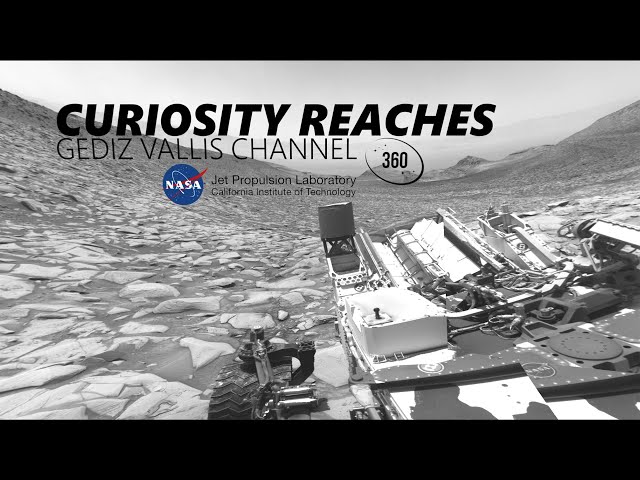
NASA’s Curiosity Rover Reaches Gediz Vallis Channel (360 View)
360-degree panorama provided by NASA’s Curiosity Mars rover. This view was captured at Gediz Vallis channel, a feature that formed…
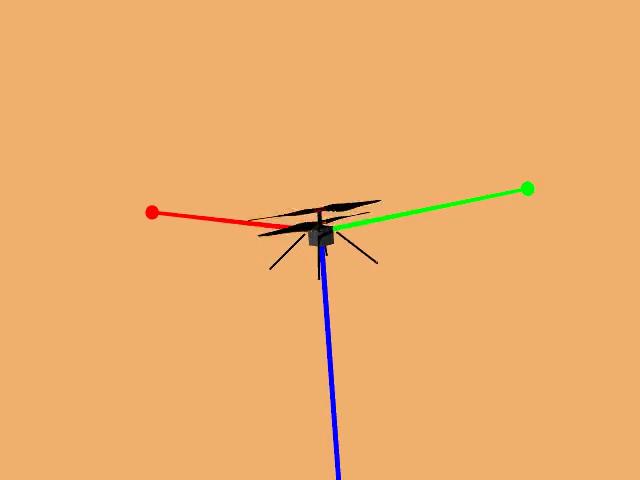
Animation of Mars Helicopter Flight Test
This animation shows a simulation of the response of NASA’s Ingenuity Mars Helicopter to the system identification, or “Sys-ID,” process.…

Rover, Helicopter Locations in Jezero Crater
This map shows the locations of NASA’ Perseverance rover (white star) and Ingenuity Mars Helicopter (cyan star) on Dec. 19,…

Sol 4132: Right Navigation Camera, Cylindrical Projection
NASA’s Mars rover Curiosity took 31 images in Gale Crater using its mast-mounted Right Navigation Camera (Navcam) to create this…

Sol 4130: Right Navigation Camera, Cylindrical Projection
NASA's Mars rover Curiosity took 31 images in Gale Crater using its mast-mounted Right Navigation Camera (Navcam) to create this…
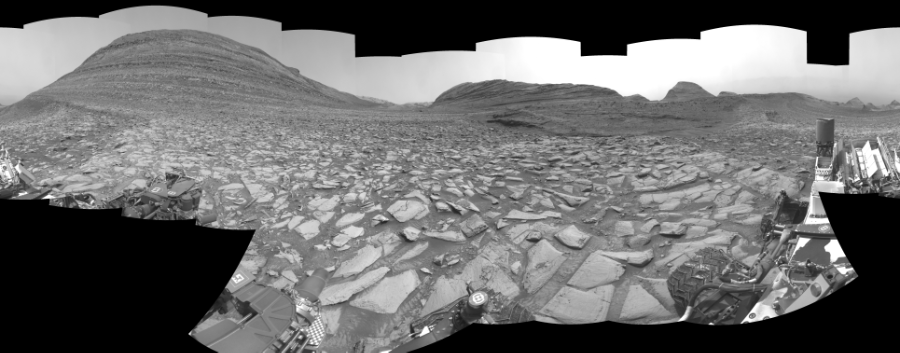
Sol 4128: Right Navigation Camera, Cylindrical Perspective
NASA's Mars rover Curiosity took 30 images in Gale Crater using its mast-mounted Right Navigation Camera (Navcam) to create this…
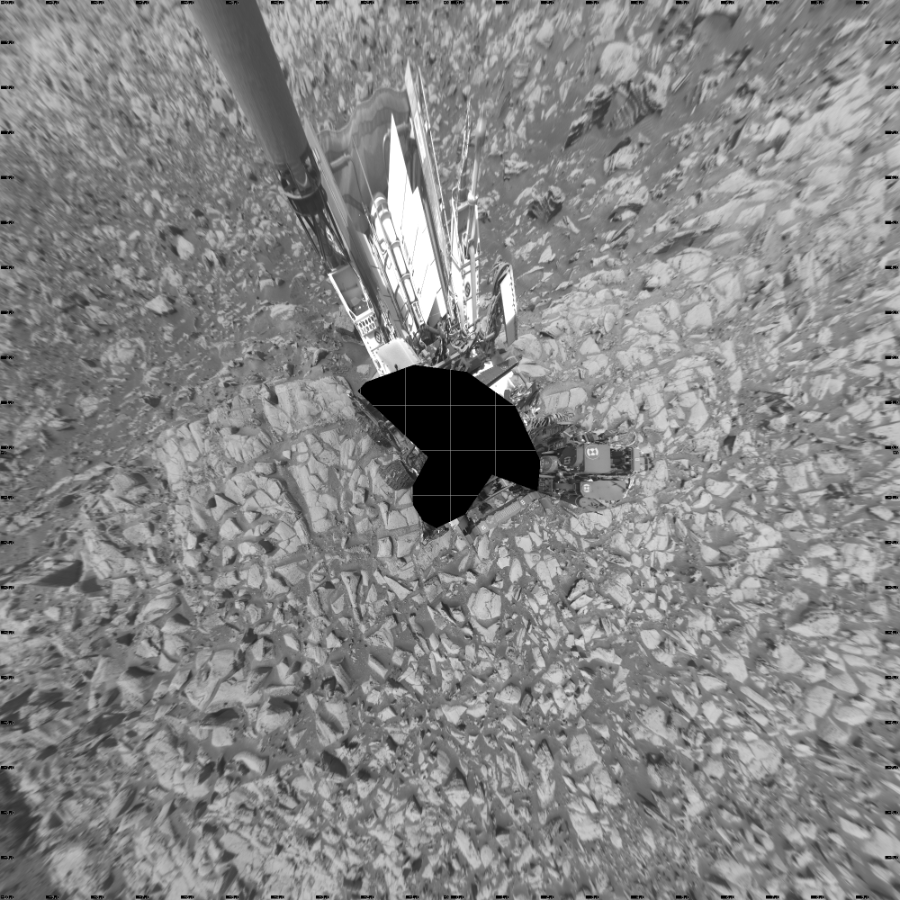
Sol 4128: Left Navigation Camera, Vertical Projection
NASA's Mars rover Curiosity took 30 images in Gale Crater using its mast-mounted Left Navigation Camera (Navcam) to create this…
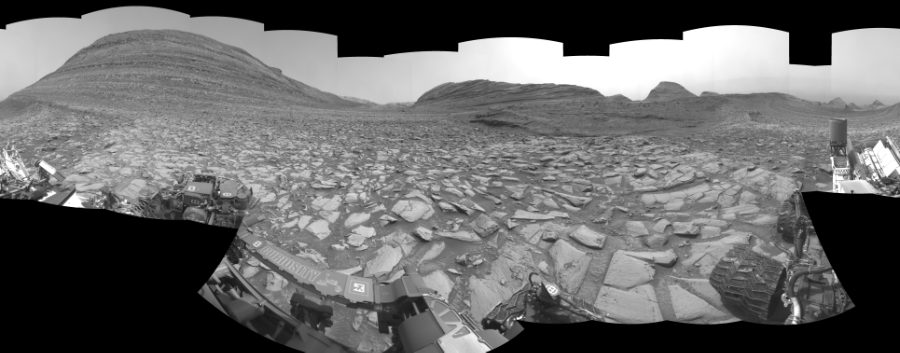
Sol 4128: Left Navigation Camera, Cylindrical Perspective

Sol 4128: Left Navigation Camera, Cylindrical Projection
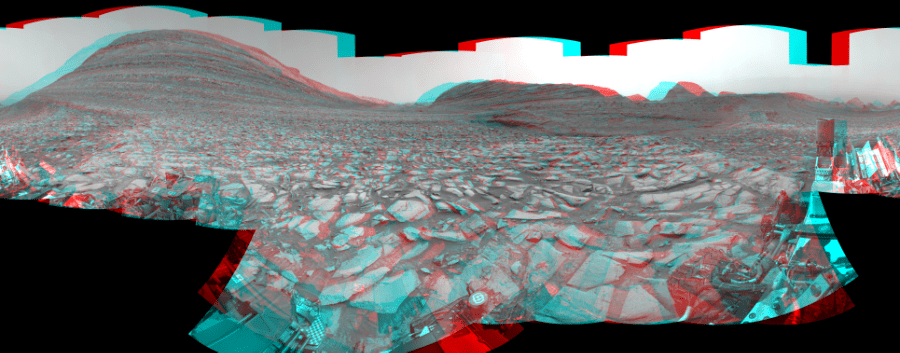
Sol 4128: Mast-Mounted Navigation Camera, Cylindrical Perspective
NASA's Mars rover Curiosity took 30 image pairs in Gale Crater using its mast-mounted Navigation Camera (Navcam) to create this…

Sol 4128: Right Navigation Camera, Cylindrical Projection

Sol 4125: Right Navigation Camera, Cylindrical Projection
NASA's Mars rover Curiosity took 52 images in Gale Crater using its mast-mounted Right Navigation Camera (Navcam) to create this…

Sol 4123: Right Navigation Camera, Cylindrical Projection
NASA's Mars rover Curiosity took 51 images in Gale Crater using its mast-mounted Right Navigation Camera (Navcam) to create this…

Sol 4118: Right Navigation Camera, Cylindrical Projection
NASA's Mars rover Curiosity took 49 images in Gale Crater using its mast-mounted Right Navigation Camera (Navcam) to create this…

Suggested Searches
- Climate Change
- Expedition 64
- Mars perseverance
- SpaceX Crew-2
- International Space Station
- View All Topics A-Z
Humans in Space
Earth & climate, the solar system, the universe, aeronautics, learning resources, news & events.

NASA Wins 6 Webby Awards, 8 Webby People’s Voice Awards

NASA’s CloudSat Ends Mission Peering Into the Heart of Clouds

Hubble Celebrates 34th Anniversary with a Look at the Little Dumbbell Nebula
- Search All NASA Missions
- A to Z List of Missions
- Upcoming Launches and Landings
- Spaceships and Rockets
- Communicating with Missions
- James Webb Space Telescope
- Hubble Space Telescope
- Why Go to Space
Astronauts Home
- Commercial Space
Destinations
Living in Space
- Explore Earth Science
- Earth, Our Planet
- Earth Science in Action
- Earth Multimedia
- Earth Science Researchers
- Pluto & Dwarf Planets
- Asteroids, Comets & Meteors
- The Kuiper Belt
- The Oort Cloud
- Skywatching
- The Search for Life in the Universe
- Black Holes
- The Big Bang
- Dark Energy & Dark Matter
- Earth Science
- Planetary Science
- Astrophysics & Space Science
- The Sun & Heliophysics
- Biological & Physical Sciences
- Lunar Science
- Citizen Science
- Astromaterials
- Aeronautics Research
- Human Space Travel Research
- Science in the Air
- NASA Aircraft
- Flight Innovation
- Supersonic Flight
- Air Traffic Solutions
- Green Aviation Tech
- Drones & You
- Technology Transfer & Spinoffs
- Space Travel Technology
- Technology Living in Space
- Manufacturing and Materials
- Science Instruments
- For Kids and Students
- For Educators
- For Colleges and Universities
- For Professionals
- Science for Everyone
- Requests for Exhibits, Artifacts, or Speakers
- STEM Engagement at NASA
- NASA's Impacts
- Centers and Facilities
- Directorates
- Organizations
- People of NASA
- Internships
- Our History
- Doing Business with NASA
- Get Involved
- Aeronáutica
- Ciencias Terrestres
- Sistema Solar
- All NASA News
- Video Series on NASA+
- Newsletters
- Social Media
- Media Resources
- Upcoming Launches & Landings
- Virtual Events
- Sounds and Ringtones
- Interactives
- STEM Multimedia

Sols 4166-4167: A Garden Full of Rocks

European Service Module

Gateway: Frequently Asked Questions

NASA Shares Lessons of Human Systems Integration with Industry

Work Underway on Large Cargo Landers for NASA’s Artemis Moon Missions

NASA Open Science Initiative Expands OpenET Across Amazon Basin

Amendment 11: Physical Oceanography not solicited in ROSES-2024

NASA Data Helps Beavers Build Back Streams

Sols 4164-4165: What’s Around the Ridge-bend?

Sols 4161-4163: Double Contact Science

NASA’s Chandra Releases Doubleheader of Blockbuster Hits

Explore the Universe with the First E-Book from NASA’s Fermi

Dr. Douglas Hudgins

NASA Photographer Honored for Thrilling Inverted In-Flight Image

NASA’s Ingenuity Mars Helicopter Team Says Goodbye … for Now

NASA Langley Team to Study Weather During Eclipse Using Uncrewed Vehicles

NASA’s Near Space Network Enables PACE Climate Mission to ‘Phone Home’

Amendment 10: B.9 Heliophysics Low-Cost Access to Space Final Text and Proposal Due Date.

NASA STEM Artemis Moon Trees

NASA Glenn Joins Big Hoopla STEM Challenge

NASA Mentors, Students Rock FIRST Buckeye Regional

First NASA Mars Analog Crew Nears End of Mission

Diez maneras en que los estudiantes pueden prepararse para ser astronautas

Astronauta de la NASA Marcos Berríos

Resultados científicos revolucionarios en la estación espacial de 2023
Why go to space.
The reasons to explore the universe are as vast and varied as the reasons to explore the forests, the mountains, or the sea. Since the dawn of humanity, people have explored to learn about the world around them, find new resources, and improve their existence.
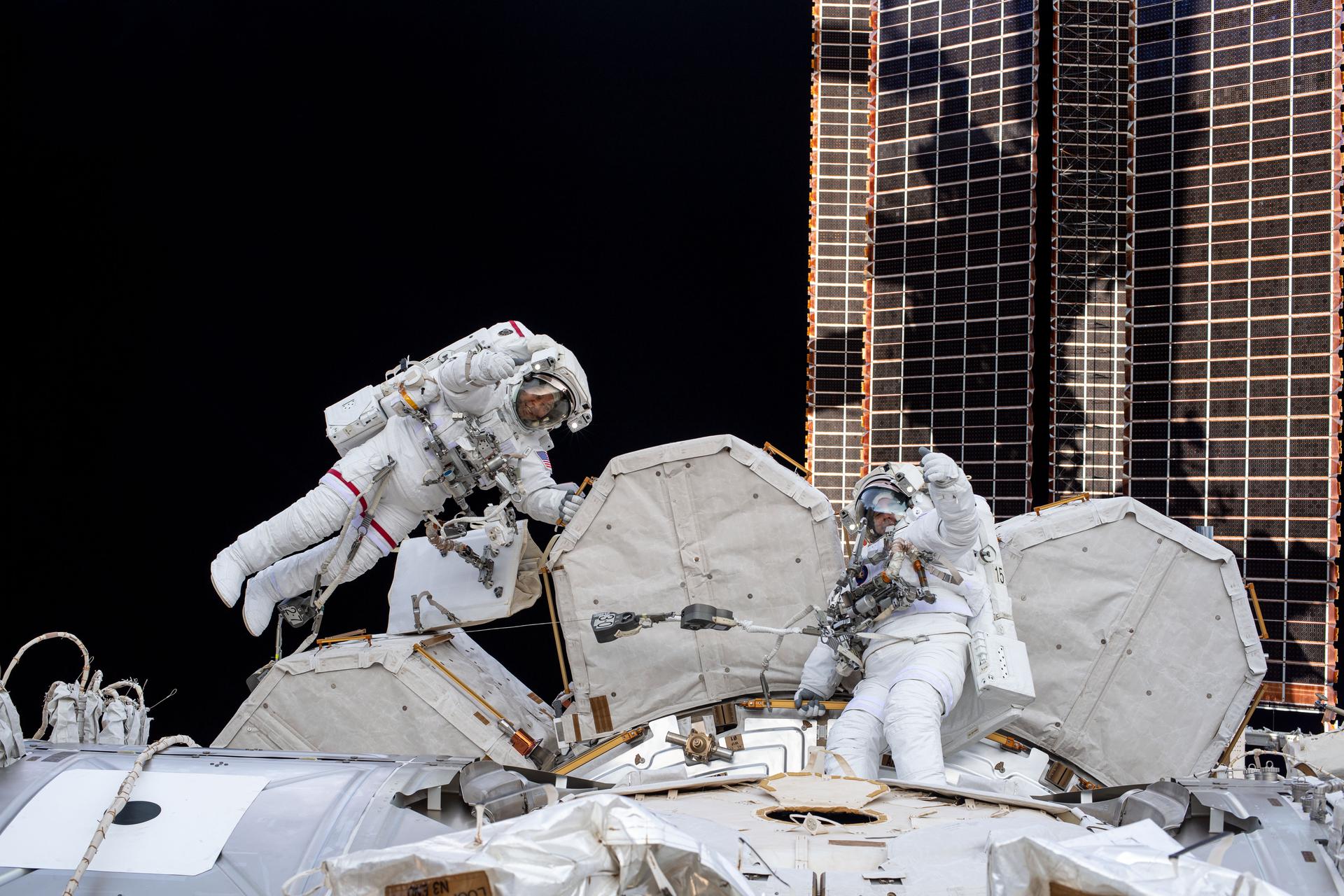
Why We Go to Space
At NASA, we explore the secrets of the universe for the benefit of all, creating new opportunities and inspiring the world through discovery.
NASA’s exploration vision is anchored in providing value for humanity by answering some of the most fundamental questions: Why are we here? How did it all begin? Are we all alone? What comes next? And, as an addendum to that: How can we make our lives better?
NASA was created more than half a century ago to begin answering some of these questions. Since then, space exploration has been one of the most unifying, borderless human endeavors to date. An international partnership of five space agencies from 15 countries operates the International Space Station, and two dozen countries have signed the Artemis Accords, signaling their commitment to shared values for long-term human exploration and research at the Moon. Through space exploration, we gain a new perspective to study Earth and the solar system. We advance new technologies that improve our daily lives, and we inspire a new generation of artists, thinkers, tinkerers, engineers, and scientists.
Benefits to Humanity
Space exploration unites the world to inspire the next generation, make ground-breaking discoveries, and create new opportunities.
Technologies and missions we develop for human spaceflight have thousands of applications on Earth, boosting the economy, creating new career paths, and advancing everyday technologies all around us.
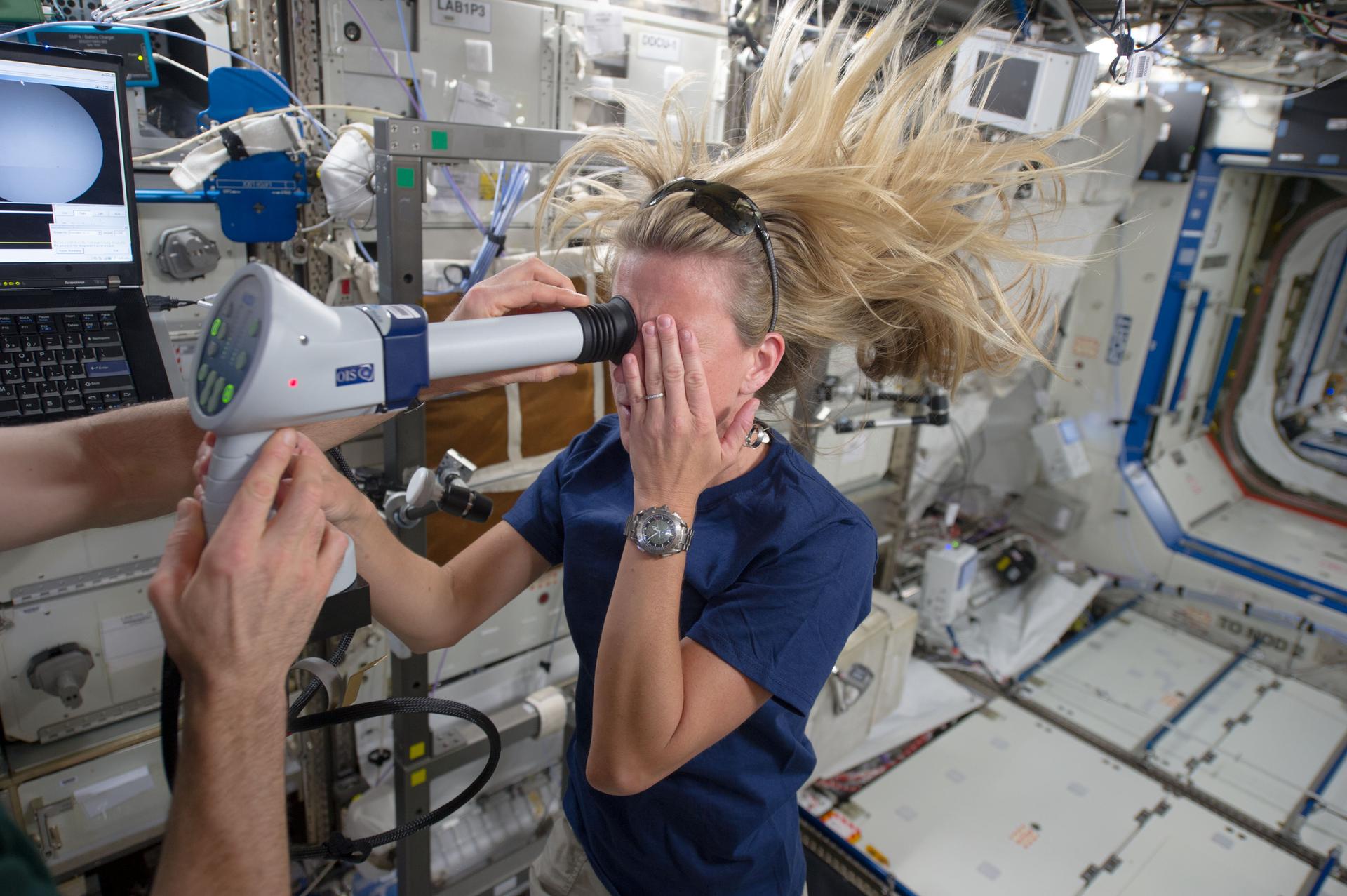
To view this video please enable JavaScript, and consider upgrading to a web browser that supports HTML5 video
Benefits to Science
The pursuit of discovery drives NASA to develop missions that teach us about Earth, the solar system, and the universe around us.
Science at NASA answers questions as practical as hurricane formation, as enticing as the prospect of lunar resources, as surprising as behavior in weightlessness, and as profound as the origin of the Universe.

Unite with us on our journey to explore.
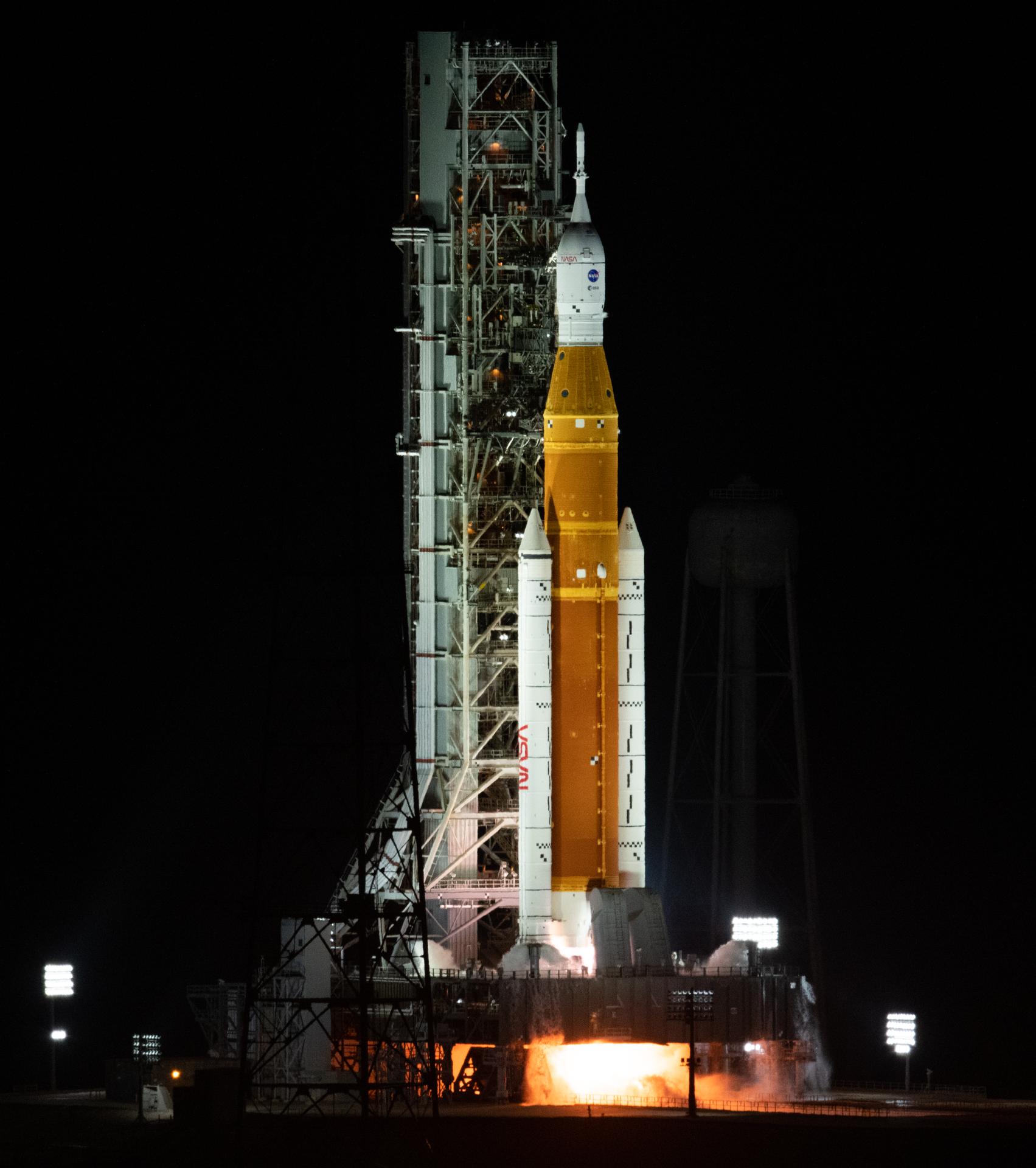
Discover More Topics From NASA

There is a place for all in outer space: ‘It’s not just for the geeks and the nerds’
UN News: Madam Director, technological development makes space exploration an even more promising vista than ever before, but at the same time, outer space is no longer just a matter for individual states or some interstates projects. It's being increasingly commercialized. What is the UN doing to make sure that his competition remains peaceful and fair?
Aarti Holla-Maini: I wouldn't characterize anything as a competition. I think we must move away from the notion that there is still a race for space that was very much a Cold War situation at the time. We have moved on from there. Now we are really looking at space science and space exploration and looking for the most innovative and pragmatic approaches to that. That's why we see more commercial companies getting involved. If space agencies on their own run large space missions, they risk taking a lot longer and being a lot more expensive.
The private sector allows a space agency, for example, NASA, to invite companies to make their proposals, and then selecting companies to engage in various missions to the Moon. If NASA was to do that on its own, it would cost a whole lot more money. This way, they spread their risk by funding multiple missions over a given period of time. They increase the chances for success.
And at the United Nations, we have the Committee on the Peaceful Uses of Outer Space (COPUOS), that's the birthplace of all of the treaties and the resolutions and principles and guidelines which underpin everything that we see happening in the space economy today. And it's our job to make sure that we maintain transparency and an open dialogue.
Around all the innovations that are happening, even if they involve companies, the industry can contribute to a to better, more informed decisions taken by policymakers. So, we're looking also for new ways to include industry in the dialogue but preserving the decision-making power of the Member States themselves: we don't want to move to a ‘pay-to-play’ model. That's not what the UN is about.
UN News: Ever since the space age began, the Moon has been seen as a possible launchpad for deep space exploration, where research liboratories could be built or precious minerals excavated, whatnot. What does the UN have to say about the Moon exploration and development? As it's becoming a popular topic, are there any new initiatives in this area when it comes to legal matters or any other body of law for that?
Aarti Holla-Maini: We are the Secretariate at the COPUOS, and the Committee also has two subcommittees. One is the Scientific and Technical Subcommittee and another is the Legal Subcommittee. We have lunar activities being covered by both and that's two separate strands.
In the legal subcommittee the discussion on space resources takes place, and by resources we mean the whole discussion on what should be done with resources that can be found on other celestial bodies, including the Moon. What can we do with lunar regolith? What should we do if we mine asteroids? Can those resources be brought back to the Earth, commercially appropriated, and so on and so forth. All of these questions are difficult questions because they actually shine a spotlight on some of the fundamental principles in the Outer Space Treaty, which says that space is for all humankind.
So, the commercial angle is not obvious there, and that's a difficult discussion. And COPUOS is looking at potentially making some guidelines around that. Similarly, in the scientific and Technical Subcommittee, we received a proposal to start a consultative mechanism on sustainable lunar activities, and we hope that it will be signed off eventually in June at the plenary meeting, and that perhaps it might result establishing an action team to look at the more practical aspects of safety and sustainability.
Even if we have a large space faring country going to the Moon or we have other smaller nations sending their missions to the Moon, neither of them wants to interfere with the other or crash into the other. It's very important that we don't have just bilateral engagements between individual countries, but that there is a global convening dialogue. And that's where we as UNOOSA leverage our unique convening power of the United Nations to keep everybody at the table and make sure that we continue to have these discussions – even if they are difficult – to hopefully advance on them.
We have taken the initiative to organize a United Nations conference – the first one – on sustainable lunar activities. When we discuss important matters where you are debating on what the right answer should be, what are the critical issues are by specific caused by innovative activities like lunar activities , it’s important that they are discussed in Vienna. Because Vienna is where the decision makers on precisely these matters convene. At that conference, we hope to just explore what can we do to enhance the global dialogue at a multilateral level through the UN.
UN News: Speaking about the use of the outer space, it's fair to say that there is now a major pollution problem. What is space debris? Why is it dangerous and what is being done to minimize its risks? So what's the UN angle here?
Aarti Holla-Maini: When we talk about pollution in space, there's different angles that you can come at it from. One of them is, of course space debris, and there are different issues around space debris. One is, there are so many pieces or objects out there of all different sizes. And we do not necessarily have a comprehensive understanding of where they all are, at what time, and so on.
So, it's very important that we collaborate to pool knowledge and capabilities around this area here to enhance space safety for all actors: whether we think of satellite communications or imagery, which we rely on for climate change and climate monitoring, or whether we think of space science and the complex telescopes and instruments which are being placed into space. Debris is an issue for all of them.
It's also a very important issue for human spaceflight. So, what are we doing? We have the ongoing discussions on long term sustainability guidelines, the COPUOS Member States are reflecting on what new guidelines could be potentially added to those which there and at UNOOSA level. We will be convening later on this year, a United Nations Space Bridge around space situational awareness, which is created to bring different pockets of actors and different systems and providers who are out there together to see how can we facilitate coordination. How can we potentially imagine a ‘system of systems’ approach?
We don't know what format it will ultimately take. And UNOOSA is not on a mission to turn the UN into some kind of a global space agency or have an operational activity here. Our job is to convene, to lead by convening, and we hope that we can facilitate progress through the dialogues that we that we help create.
And if I can also just bring your attention to something else which is more of an emerging problem. It is around the topic of atmospheric ablation, a relatively new science. You know that there are many more launches happening into space than there were ten years ago. The question is what impact do the launch fumes have on the atmosphere? But also we have a lot more debris and old satellites which are being burned up in the atmosphere on re-entry. A lot, significantly more than there were some years ago. And so that also has an impact.
We were approached by UNEP , the United Nations environmental program. And so, we are looking into that together and informing and educating ourselves around this emerging science. It may well be that we find that we're already in an urgent situation. We don't know, we don't know at this point.
UN News: This brings me to the question about the Space4Climate Action initiative. What is it and why is it important?
Aarti Holla-Maini: We run a program called UN-SPIDER that is space-based information for disaster and emergency response. We all know that the number of severe weather events, natural disasters and everything which is happening as. Result of climate change and global warming are increasing year on year. Multiple national disaster management centres. They are working with spider in order to do early warning, monitoring, mitigation and so on. Whether it's for floods, drought on the one hand, all the way to forest fires, mosquito borne diseases, locusts devouring a crop and causing famine in particular country, right, all the way across.
No one apart from UNOOSA has as mission and priority to facilitate the access of satellite data, and to make sure how to use it. So, whereas for other entities and agencies, space is an enabler for their diverse missions, for us it is our mission. It is our priority in itself. We want to make sure that every Member State who needs it is empowered and equipped with the tools: the data and the know-how, the capacity that they need to be resilient in the face of all the global shocks that are coming, and particularly those which are linked to climate. That's the work we do there and that's going to grow.
UN News: Speaking of being properly equipped, it comes with the human factor. Do you see enough enthusiasm on behalf of the young generation in space science?
Aarti Holla-Maini: Yes, there is a Space Generation Advisory Council which convenes youths from all over the world, and they are very active. They are very concerned with the issues that are confronting us. Whether it's enabling space to deliver on the sustainable development goals like global healthcare, education for all, climate change and so on, or whether it's to do with space sustainability, we do see a lot of engagement with them. One of the programs that we run is Space for Women and we try to motivate the younger generation – girls and women – to get into STEM (science, technology, engineering and mathematics).
We do have examples of great women who are breaking the glass ceiling: they're in leadership position across different parts of the space ecosystem. But there's not enough to pick from in the engineering schools and so on. So, it starts with the youth, and I think we probably need to do a lot more to encourage young women to look into getting into the STEM fields, but also simply to think that it doesn't matter whether you are technical and mathematical and scientific in terms of your skill set. I'm not. I'm certainly not. My skills are softer skills, it's languages, it's interpersonal communication skills. You know, I did a degree in law with German law and then I did an MBA.
There is room for a very diverse skill set from the youth and we just need to raise awareness of all the different avenues and possibilities that exist within the space sector to show that this is not just for the geeks and the nerds who like engineering. It's really not about that. There's room for musicians, lawyers, artists – anything you can think of – to be part of this very dynamic and innovative sector, which is so exciting today.
Technological advances have transformed space exploration, making it more accessible but also more commercially driven, a senior official with the UN Office for Outer Space Affairs (UNOOSA) has been telling UN News, ahead of the international day that marks the first manned space flight by Yuri Gagarin in 1961.
Thanks to private capital, missions to study the Moon have surged, accompanied by a significant rise in space launches over the past decade.
But these developments raise questions about the regulations governing space, increasing space pollution and diversity within space agencies, UNOOSA Director Aarti Holla-Maini , tells Anton Uspensky.
You'll travel nearly a trillion miles in your lifetime, even if you never leave home. Here's how.
Everything in the universe is moving, and fast.
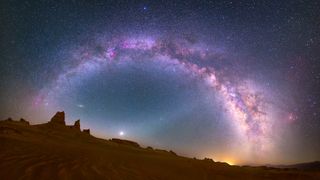
Whether you're a frequent jet-setter or a couch potato, you travel much more than you think.
In fact, that would be true even if you were to stay perfectly motionless your entire life. So how far, on average, does a person travel in their lifetime? The answer depends on whether you consider Earth as your vehicle.
As for distance on Earth's surface , the typical human will travel 30,000 to 50,000 miles (50,000 to 80,000 kilometers) in their lifetime, though some globe-trotters will go much farther. Considering most people accumulate the majority of this mileage from commutes and quick errands, that's an impressively large distance — enough to circumnavigate the globe at least once.
Related: How fast is Earth moving ?
But as large as it is, that number pales in comparison to the motion we get simply by hitching a ride on Earth. Our planet spins on its axis. And because Earth is mostly solid, it rotates as a single rigid body, meaning that everywhere on the planet experiences the same angular speed and everyone travels a full circle every 24 hours.
But if you were to stand on the north or south geographic poles, you wouldn't actually travel anywhere; you would just spin around and around. Those on the equator, however, get a tremendous amount of linear speed thanks to this rotation — roughly 1,000 mph (1,600 km/h).
Most people don't live on the equator, however, so we can say that the average human is constantly traveling at roughly 930 mph (1,500 km/h). (As we will see, precision doesn't really matter here.) When you add that up over a roughly 80-year life span, each person travels around 600 million miles (1 billion kilometers) in their lifetime.
Get the Space.com Newsletter
Breaking space news, the latest updates on rocket launches, skywatching events and more!
That's a tremendous leap above the travel we do on Earth's surface, but we're just getting warmed up. In addition to rotating, Earth orbits the sun . That orbit is an ellipse, which causes our planet to occasionally move more quickly or slowly depending on its distance from the sun. But on average, Earth's orbital speed is about 19 miles per second (30 km per second).
That's about 600 million miles (1 billion km) every year. So over a lifetime, each of us travels roughly 50 billion miles (80 billion km) — which, again, dwarfs the distance we travel due solely to the rotation of our planet.
But Earth is not the only object in motion in the universe. The sun travels in a long, lazy orbit around the center of the Milky Way galaxy . One of these "galactic years" takes roughly 230 million Earth years to complete. To put that into perspective, life first arose on Earth around 17 galactic years ago, and in only 25 more galactic years, the sun will die .
Compared with these enormous galactic scales, a human lifetime is barely perceptible, with the sun barely inching along its orbit. But on a human scale, it's almost incomprehensible; due to the motion of the sun orbiting the center of the Milky Way, each of us will travel around 370 million miles (600 billion km) in our lifetime.
Related: Stunning photos of our Milky Way galaxy
— Is time travel possible?
— What would happen if Earth suddenly stopped spinning?
— Why is Earth's day 24 hours long (and how did the sun keep it from being longer)?
And it doesn't stop there. Our entire galaxy is in motion, too. All galaxies are, on average, flying away from each other, but that's due to the expansion of the universe . On top of that expansion, each galaxy has some motion of its own — something astronomers dub "peculiar velocity." For example, the Milky Way is on a collision course with our nearest neighbor, the Andromeda galaxy . The mutual gravitational attraction is enough to overwhelm the general expansion of the universe, and in about five billion years, these galaxies will begin to merge.
On top of that, both the Milky Way and Andromeda are headed toward the Virgo cluster, a massive cluster of galaxies about 65 million light-years away. Beyond that, the Virgo cluster and its surrounding galaxies are all headed toward the Great Attractor, which is the center of our supercluster, called Laniakea.
Astronomers can calculate the combined motion of these gravitational influences by observing the cosmic microwave background (CMB), which is composed of radiation released when our universe cooled from a plasma state when it was only 380,000 years old. It completely soaks the universe and is the same to one part in a million across the entire sky.
Any motion in the universe will be visible in the CMB. Light in the direction we're headed in will get Doppler-shifted to higher frequencies (blueshift), and light in the direction we're moving away from will be shifted to lower frequencies ( redshift ). By measuring this shift, astronomers can calculate our total velocity through the universe, and those measurements give a number of around 390 miles per second (630 km per second).
When you add that up over an 80-year life span, it gives you a total movement of 930 billion miles (1.5 trillion km). Even if you never leave home, you will still travel that enormous distance — that's quite an accomplishment!
Join our Space Forums to keep talking space on the latest missions, night sky and more! And if you have a news tip, correction or comment, let us know at: [email protected].

Paul M. Sutter is an astrophysicist at SUNY Stony Brook and the Flatiron Institute in New York City. Paul received his PhD in Physics from the University of Illinois at Urbana-Champaign in 2011, and spent three years at the Paris Institute of Astrophysics, followed by a research fellowship in Trieste, Italy, His research focuses on many diverse topics, from the emptiest regions of the universe to the earliest moments of the Big Bang to the hunt for the first stars. As an "Agent to the Stars," Paul has passionately engaged the public in science outreach for several years. He is the host of the popular "Ask a Spaceman!" podcast, author of "Your Place in the Universe" and "How to Die in Space" and he frequently appears on TV — including on The Weather Channel, for which he serves as Official Space Specialist.
Satellites watch as 4th global coral bleaching event unfolds (image)
Happy Earth Day 2024! NASA picks 6 new airborne missions to study our changing planet
Cosmic fountain is polluting intergalactic space with 50 million suns' worth of material
- Homer10 So in one lifetime you will travel 1/5th of a lightyear. Reply
- Atlan0001 Don't forget TIME. We are change travelers at the constant of the speed of light emission as well as space travelers, therefore we are time travelers too. Regarding the length of a human life span, you can measure a brain top to bottom, side to side, outside-in and inside-out, and beginning to end, but just try measuring a quantum entangled, entangling, mind (the "infinity of the mind" (even someone's, some being's, closed mind, shrinking mind, ego, id, matching their non-frontier closed universe view)). The body may go away, but the mind, however tied to the universe at large (enlarging minds) and/or small (shrinking minds), doesn't. Reply
- john_chrysostom The premise of this article is a bit silly. You'll travel an arbitrarily large amount if you pick the right rest frame. Or an arbitrarily small amount (zero in your own rest frame). And the author knows this. The author wants to treat the rest frame in which the CMB is isomorphic as a privileged frame, but one of the most basic cardinal rules of GR is that there is no privileged frame. Reply
- maximus111 Another dozen years and I'll have done my 1.5 trillion kms. Now I know why I'm constantly tired, always on the move. Reply
- rudder So, if my math is correct, at any given moment we are traveling at around 1,327,000 mph? I tried to figure this out a few years ago but couldn't find the speeds of sun, galaxy, expansion, etc. to do the math. Reply
- View All 5 Comments
Most Popular
- 2 India aims to achieve 'debris-free' space missions by 2030
- 3 Scientists use AI to reconstruct energetic flare blasted from Milky Way's supermassive black hole
- 4 Earth Day 2024: Witness our changing planet in 12 incredible satellite images
- 5 NASA's Voyager 1 spacecraft finally phones home after 5 months of no contact
April 22, 2024
Low-Earth Orbit Faces a Spiraling Debris Threat
Millions of human-made objects travel at high speeds in low-Earth orbit, polluting space and increasing the chance of collision with satellites and other spacecraft
By Aneli Bongers & José L. Torres
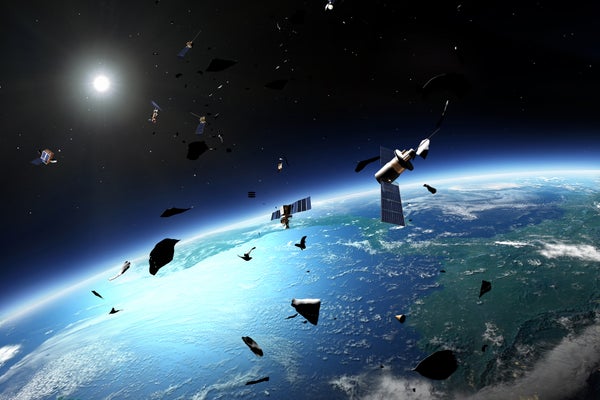
Mark Garlick/Science Photo Library/Getty Images
Space is getting crowded, with junk. Essential satellites delivering navigation, weather forecasts, the Internet and other services face this threat daily. Old rockets, decaying spacecraft and human operations in space leave behind orbital debris that increasingly threatens collisions, menacing a growing space economy. A decade ago the film Gravity dramatized the consequences of space pollution, with an avalanche of space junk sweeping across the sky to batter everything in orbit, including its astronaut hero. We haven’t done anything serious about it since then.
NASA defines space junk, or orbital debris , as “any human-made object in orbit that no longer serves a useful purpose, including spacecraft fragments and retired satellites.” A 2009 incident, when the U.S. communications satellite Iridium 33 collided with the defunct Russian military satellite Kosmos 2251, serves as a good reminder of its growing threat. That single collision created more than 2,200 pieces of new debris measuring over five centimeters in diameters, according to NASA .
More of these collisions are coming. In February an abandoned Russian satellite passed within about 20 meters of a NASA satellite. SpaceX’s Starlink satellite constellation alone carried out more than 25,000 collision-avoidance maneuvers from December 2022 to May 2023. And even on Earth, space junk is a problem, with a Florida home struck in March by a battery that fell from an International Space Station cargo mission.
On supporting science journalism
If you're enjoying this article, consider supporting our award-winning journalism by subscribing . By purchasing a subscription you are helping to ensure the future of impactful stories about the discoveries and ideas shaping our world today.
In space, debris comes from the frequent breakup of expended rocket bodies , explosion of satellites, dead satellites , collisions , paint flakes and even tools lost by astronauts. Around 85 percent of this debris resides within low-Earth orbit, which is below 2,000 kilometers in altitude. NASA estimates this orbit contains around 34,000 pieces of debris larger than 10 cm in diameter, 900,000 objects between 1 cm and 10 cm, and more than 128 million fragments between 1 mm and 1 cm. But let’s not be fooled by the size. Even small debris traveling at high velocities can trigger catastrophic collisions, with the added problem that fragments smaller than 10 cm are impossible to track with existing surveillance technology . An even more dangerous threat is self-propagation. Called the “ Kessler syndrome ,” this phenomenon occurs when collisions produce so much debris that Earth’s orbit becomes unusable for any human activity.
We must stop the growth of space debris, while realizing it is a demanding task. Neither national governments nor international organizations control property rights on orbit, apart from spacecraft ownership. Therefore, space activities are not subject to any centralized regulation or property rights scheme. In outer space “first come, first serve” instead applies. Like other global economic failures on Earth (such as fisheries in international waters, high seas sailing and climate change ) that international cooperation has failed to solve or left only partly solved, overuse and depletion are direct consequences of such a “ tragedy of the commons .”
In all these cases, including orbital debris, pollution exerts a cost on society where market prices do not capture the impact. Such “ externalities ” are market failures that, in most cases, require intervention from a government or other central authority. Simply put, rocket launch prices don’t reflect their real costs, which include clean-up expenses. We must reverse this situation before the cost becomes too high. Although human exploration and economic exploitation of outer space are relatively recent (the first human-made spacecraft, Sputnik, successfully launched in 1957 ), evident market failures and other economic, legal and political issues are arising at rocket speed as commercial, military and scientific activities in outer space expand. SpaceX is now developing a massive rocket that will launch 1.25-ton satellites like a Pez dispenser , adding to a fleet of 5,500 Starlink satellites already in space, part of a planned constellation of 42,000. That’s particularly alarming, because, according to a study of ours published last year in Ecological Economics , low-Earth orbit can only hold about 72,000 satellites without a real risk of a Kessler syndrome event, under current debris conditions.
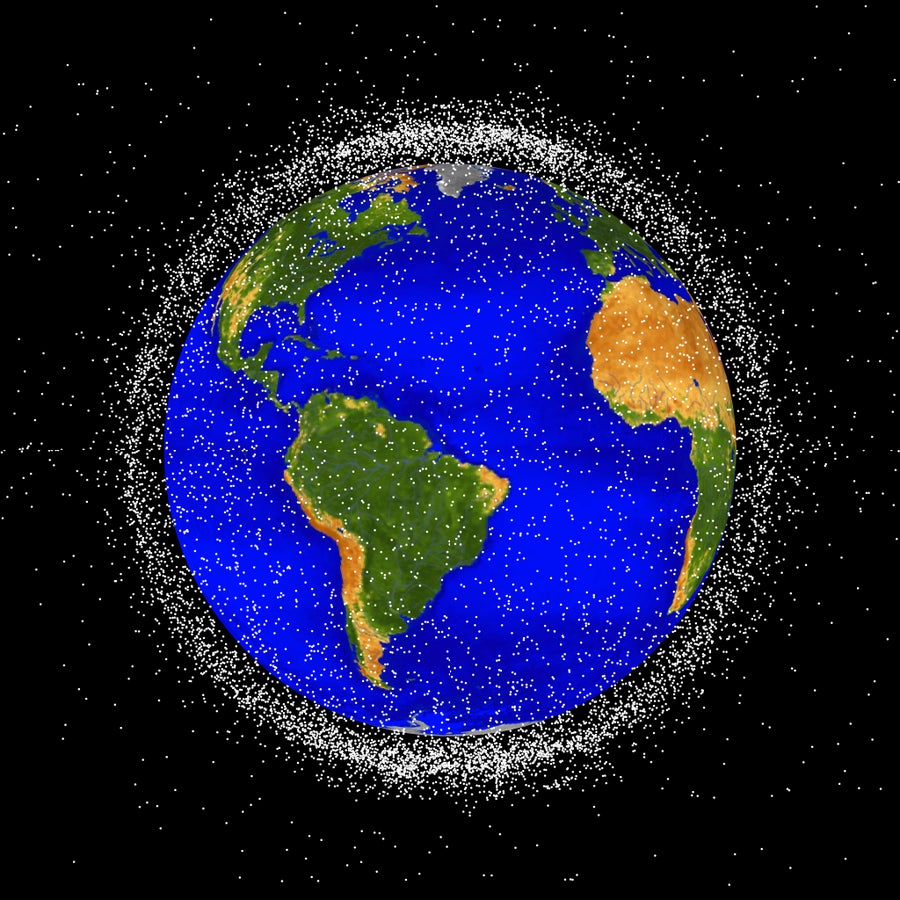
LEO stands for low Earth orbit and is the region of space within 2,000 km of the Earth's surface. It is the most concentrated area for orbital debris, represented with white dots and scaled to optimize visibility.
No surprise, spacefaring nations that are most dependent on satellites face the biggest risks of space debris. Instead of cooperating to mitigate space debris, however, they have failed to take decisive action. That’s despite the increasing probability of losing satellites, resulting in more resources that must be dedicated to debris surveillance tracking and collision-avoidance maneuvers that interrupt services and burn fuel. That, in turn, reduces the operational life of satellites, adding to their costs as the threat burgeons. Nonetheless, spacefaring companies have no incentive to minimize debris generation except for protecting their own spacecraft, which they do with shields .
We need to take both passive and active measures before space junk gets out of control. Space agencies and the United Nations have elaborated guidelines for debris mitigation. Some include changing the design of satellites with shields and reinforcing fuel systems to avoid breakups. Another recommends that all spacefarers provide spacecraft with maneuverability and add reserve fuel to de-orbit derelict spacecraft.
On the active measures side , developing debris-free recovery launch vehicles will greatly help to eliminate the primary source of debris. But there are still other sources, and given current orbiting derelict stock, active depolluting actions are also necessary. That’s because the life spans of orbital debris vary depending on altitude. Below 200 kilometers, it may only last a few days, whereas those at 1,000 km can last up to a thousand years. At 2,000 km, the debris can remain in orbit for up to 50,000 years without human intervention.
Cleaning space requires designing and implementing active debris removal (ADR) projects . ADR vehicles can be equipped with robotic arms, nets, collecting balloons and other tools. Earth-based lasers might also increase the atmospheric drag of debris, as another option. Policy makers must explore financing the cost of removal policies with instruments already in place for mitigating pollution on Earth. They should also develop guidelines and regulations to share the space junk removal cost among all spacefaring agents.
Finally, there is also a more alarming problem to pay attention to: the military’s use of space. Space pollution results not only from commercial and scientific activities, but also because of outer space’s growing strategic value for defense, security and warfare. Hard as it is to understand, Earth's orbit has been polluted not only accidentally but also intentionally, as some countries have conducted antisatellite tests using missiles that destroyed their own satellites. The last one, performed by Russia in 2021, created a vast cloud of hundreds of thousands of fragments , dramatically increasing orbital debris at the most congested and polluted altitudes.
The militarization and weaponization of outer space contribute to orbital debris while acting as a roadblock to the de-pollution of space. Development of debris removal vehicles and devices is hindered by their dual-use status as antisatellite weapons, a significant obstacle to implementing international policies for eliminating orbital pollution. Any ADR technology could also be viewed as an offensive weapon, as it could remove enemy satellites from orbit. For the same reason, the militarization of outer space could threaten the development of new in-space industries for the servicing, refueling, upgrading, maintenance and repair of satellites. Humanity instead needs a clean, safe and regulated space environment to build a better world on Earth.
This is an opinion and analysis article, and the views expressed by the author or authors are not necessarily those of Scientific American.
Voyager 1: NASA's longest-running spacecraft back in touch with Earth after five months of silence
The Voyager probes are in interstellar space but Voyager 1 stopped sending back usable information in November. After months of work, NASA scientists have now heard back from the spacecraft.
By Mickey Carroll, science and technology reporter
Tuesday 23 April 2024 11:45, UK

NASA's longest-running spacecraft Voyager 1 is sending information back to Earth again for the first time since November.
Scientists have managed to fix a problem on the probe, which was launched 46 years ago, after five months of silence.
On 14 November last year, Voyager 1 stopped sending usable data back to Earth, even though scientists could tell it was still receiving their commands and working well otherwise.
Hi, it's me. - V1 https://t.co/jgGFBfxIOe — NASA Voyager (@NASAVoyager) April 22, 2024
It was first launched alongside its twin, Voyager 2. The pair are the only spacecraft to ever fly in interstellar space , which is the space between stars.
The Voyager probes send back never-seen-before information about our galaxy. Since they blasted off in 1977, they have revealed details in Saturn's rings, provided the first in-depth images of the rings of Uranus and Neptune and discovered the rings of Jupiter.
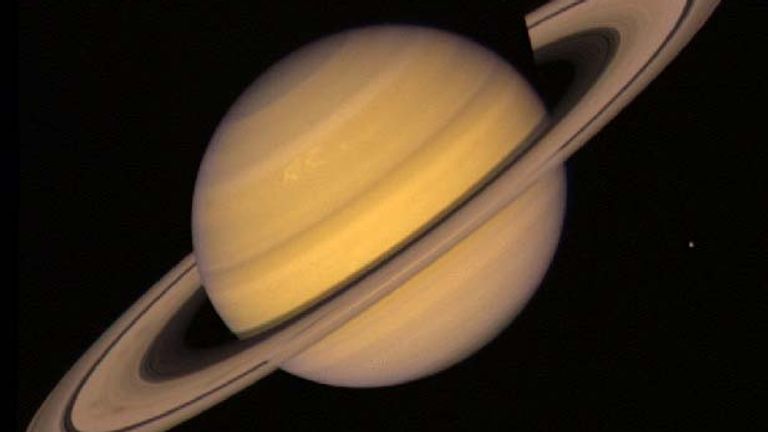
Although their cameras are switched off to conserve power and memory, they are still sending back information that would be impossible to get anywhere else.
With all this data stuck onboard and the spacecraft more than 15 billion miles from Earth, NASA scientists needed to fix the problem remotely.
More on Nasa

Lyrid meteor shower: How UK stargazers can watch the oldest annual meteor shower

NASA chief says 'secretive' China is hiding military projects in space
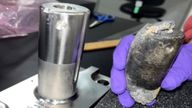
Mystery object that crashed into Florida home last month was 'discarded space junk', NASA says
Related Topics:
The team at NASA's Jet Propulsion Laboratory in California confirmed in March that the issue was with one of Voyager 1's three onboard computers. That computer, called the flight data subsystem, is responsible for packaging the data up before it is sent back to Earth.
Engineers have confirmed that corrupted memory aboard my twin #Voyager1 has been causing it to send unreadable data to Earth. It may take months, but our team is optimistic they can find a way for the FDS to operate normally again: https://t.co/qe5iQUu4Oj https://t.co/AGFBZFz53v — NASA Voyager (@NASAVoyager) April 4, 2024
Within the computer, a single chip containing some of the computer's software code had stopped working. Without that code, the data was unusable.
The engineers couldn't pop over and fix it. Instead, on 18 April, they remotely split the code across different parts of the computer.
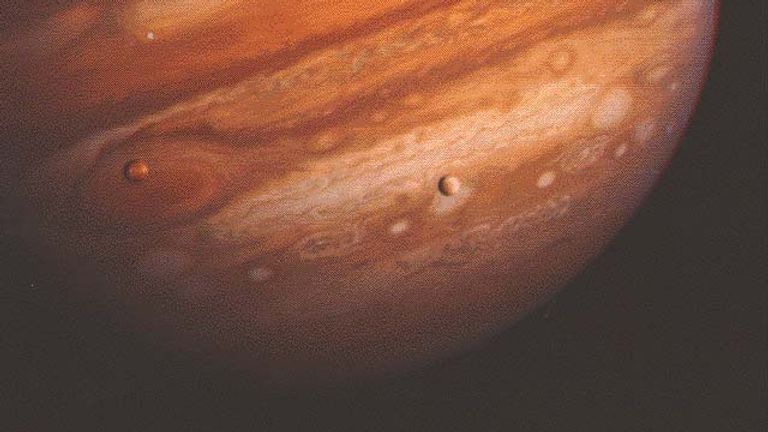
Then they had to wait to see if their fix had worked.
It takes around 22-and-a-half hours for a radio signal to reach Voyager 1 and another 22-and-a-half hours for a response to come back.
Please use Chrome browser for a more accessible video player
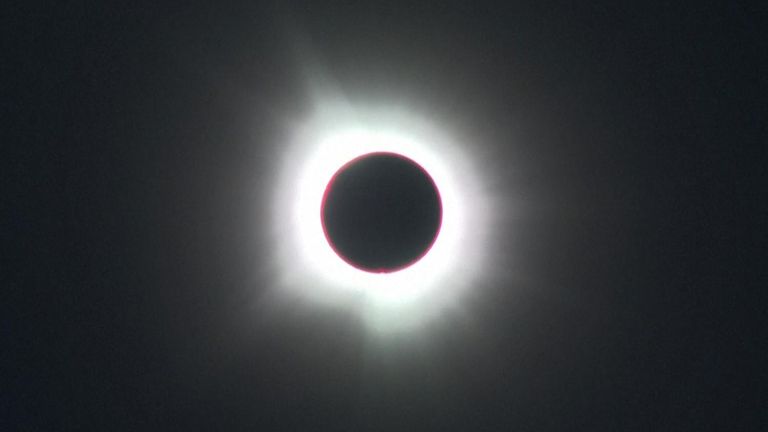
On 20 April, the team got good news. For the first time in five months, they were in contact with Voyager 1 again and could check the health and status of the spacecraft.
Now, they'll adjust the rest of the computer so it can begin sending back more data.

Keep up with all the latest news from the UK and around the world by following Sky News
Be the first to get Breaking News
Install the Sky News app for free

Voyager 2 is working normally and heading towards a star called Ross 248. It'll come within 1.7 light years of it in around 40,000 years.
Voyager 1 will almost reach a star in the Little Dipper constellation in 38,200 years from now.
Related Topics
MORE SECTIONS
- Social Casino
MORE FROM THE SUN
- Newsletters

Aliens may travel across space on METEORS – suggesting humans might not have originated on Earth, new study claims
- Millie Turner , Technology & Science Reporter
- Published : 12:06 ET, Apr 22 2024
- Updated : 14:15 ET, Apr 22 2024
- Published : Invalid Date,
ALIEN species may be meteor-hopping across space and quietly colonising the galaxy, a fringe theory suggests.
It's a concept known as panspermia, and it resembles how plant species can migrate when their seeds are spread by birds.

The hunt for alien life is difficult - especially when scientists aren't entirely sure what they're looking for.
But a pair of astronomers, Harrison B. Smith and Lana Sinapayen, have decided to focus less on what life would look like and more on what life would do to survive.
If life is less viable on one exoplanet, alien life that is capable of panspermia will try elsewhere.
And that can be done by hitching a ride on meteorites or other celestial bodies, the pair write in a new study, that is awaiting peer review.
If the conditions are right, life might thrive.
With new life, the new planet would begin to resemble the alien lifeforms 'home' planet - like how Earth changed in accustom to humans.
Smith and Sinapayen aim to identify potential biosignatures scientists can use to spot life on other planets from afar.
For example, there is far more oxygen in Earth's atmosphere today than there would be if life was not present.
Most read in Science

Chase Bank users report login issues as bank app and website suffer outage

Bianca Censori fans say Ye is ‘sucking life out of her’ on braless throwback video

Cops testing AI body cam that ‘writes its own police reports’ in five minutes

We bought home with a pool - now we are trapped by ‘golden handcuff’
This is what makes our water world look so green to distant observers.
Extraterrestrial species that are capable of panspermia would attempt to make those same changes on every planet they came across.
Cosmic chaos
Our universe is incredibly chaotic.
And while the galaxy we call home is currently quite peaceful, it has endured a violent past long before human beings came to be.
Martian meteorites have been found on Earth, dating back to these formative years.
Scientists are confident in life's ability to 'find a way'.
An attempt at life on one exoplanet might fail, but might succeed on the next - it's all about finding those 'goldilocks' conditions for survival.
But the theory suggests that life doesn't have to begin on it's 'home' planet.
Read More on The US Sun

Wendy's divorce judge chastises her guardian over star's financial records

I'm a Fisker fan but abandoned car order, $5k payment after delivery fears
Instead, life could have blossomed on exoplanet number one, two, three or 4,000.
It's an interesting concept, particularly when looking at our own existence on this blue rock of ours.
Find out more about science
Want to know more about the weird and wonderful world of science? From the Moon to the human body, we have you covered...
- When is the next Full Moon ?
- What is a Super Moon ?
- What is SpaceX ?
- Where is the edge of space ?
- How many bones are in the human body ?
- How many chromosomes do humans have?
- What causes a volcano to erupt ?
- Which sharks attack the most humans?
- What are the conspiracy theories about the world ending?
- All the UFO sightings and whether aliens are real
- Which country has the most earthquakes?
- Aliens and UFOs
- Space and astronomy
- Weird Science
Advertisement
Supported by
Dubai’s Extraordinary Flooding: Here’s What to Know
Images of a saturated desert metropolis startled the world, prompting talk of cloud seeding, climate change and designing cities for intensified weather.
- Share full article

By Raymond Zhong
Scenes of flood-ravaged neighborhoods in one of the planet’s driest regions have stunned the world this week. Heavy rains in the United Arab Emirates and Oman submerged cars, clogged highways and killed at least 21 people. Flights out of Dubai’s airport, a major global hub, were severely disrupted.
The downpours weren’t a freak event — forecasters anticipated the storms several days out and issued warnings. But they were certainly unusual. Here’s what to know.
Heavy rain there is rare, but not unheard-of.
On average, the Arabian Peninsula receives a scant few inches of rain a year, although scientists have found that a sizable chunk of that precipitation falls in infrequent but severe bursts, not as periodic showers.
U.A.E. officials said the 24-hour rain total on Tuesday was the country’s largest since records there began in 1949 . But parts of the nation had experienced an earlier round of thunderstorms just last month.
Oman, with its coastline on the Arabian Sea, is also vulnerable to tropical cyclones. Past storms there have brought torrential rain, powerful winds and mudslides, causing extensive damage.
Global warming is projected to intensify downpours.
Stronger storms are a key consequence of human-caused global warming. As the atmosphere gets hotter, it can hold more moisture, which can eventually make its way down to the earth as rain or snow.
But that doesn’t mean rainfall patterns are changing in precisely the same way across every corner of the globe.
In their latest assessment of climate research , scientists convened by the United Nations found there wasn’t enough data to have firm conclusions about rainfall trends in the Arabian Peninsula and how climate change was affecting them. The researchers said, however, that if global warming were to be allowed to continue worsening in the coming decades, extreme downpours in the region would quite likely become more intense and more frequent.
The role of cloud seeding isn’t clear.
The U.A.E. has for decades worked to increase rainfall and boost water supplies by seeding clouds. Essentially, this involves shooting particles into clouds to encourage the moisture to gather into larger, heavier droplets, ones that are more likely to fall as rain or snow.
Cloud seeding and other rain-enhancement methods have been tried across the world, including in Australia, China, India, Israel, South Africa and the United States. Studies have found that these operations can, at best, affect precipitation modestly — enough to turn a downpour into a bigger downpour, but probably not a drizzle into a deluge.
Still, experts said pinning down how much seeding might have contributed to this week’s storms would require detailed study.
“In general, it is quite a challenge to assess the impact of seeding,” said Luca Delle Monache, a climate scientist at the Scripps Institution of Oceanography in La Jolla, Calif. Dr. Delle Monache has been leading efforts to use artificial intelligence to improve the U.A.E.’s rain-enhancement program.
An official with the U.A.E.’s National Center of Meteorology, Omar Al Yazeedi, told news outlets this week that the agency didn’t conduct any seeding during the latest storms. His statements didn’t make clear, however, whether that was also true in the hours or days before.
Mr. Al Yazeedi didn’t respond to emailed questions from The New York Times on Thursday, and Adel Kamal, a spokesman for the center, didn’t immediately have further comment.
Cities in dry places just aren’t designed for floods.
Wherever it happens, flooding isn’t just a matter of how much rain comes down. It’s also about what happens to all that water once it’s on the ground — most critically, in the places people live.
Cities in arid regions often aren’t designed to drain very effectively. In these areas, paved surfaces block rain from seeping into the earth below, forcing it into drainage systems that can easily become overwhelmed.
One recent study of Sharjah , the capital of the third-largest emirate in the U.A.E., found that the city’s rapid growth over the past half century had made it vulnerable to flooding at far lower levels of rain than before.
Omnia Al Desoukie contributed reporting.
Raymond Zhong reports on climate and environmental issues for The Times. More about Raymond Zhong

IMAGES
VIDEO
COMMENTS
Space Station Expedition 70. The Expedition 70 crew began on Sept. 27, 2023. The astronauts and cosmonauts will be studying an array of microgravity phenomena to benefit humans living on and off the Earth. The orbital residents will also explore heart health, cancer treatments, space manufacturing techniques, and more during their long-duration ...
Temperatures on Mars can range from -284 degrees F to 86 degrees F. The atmosphere on Mars is 96% carbon dioxide. One day on Mars lasts about 37 minutes longer than an Earth day. A year on Mars is almost twice as long as a year on Earth. Gravity on Mars is about one-third of the gravity on Earth.
NASA aims to travel to the moon again—and beyond. Here's a look at the 21st-century race to send humans into space. Private spaceflight is not a new concept. In the United States, commercial ...
Anyone involved in space travel will scoff at this, but it's a good question, and space agencies often don't communicate their achievements enough. Almost every sector of human progress has ...
For a few minutes on Jan. 26, 20 people were in the final frontier at the same time. Humanity tied a spaceflight record late last month, though the news flew under pretty much everyone's radar ...
Many successful space missions over the past 40 years have highlighted the advantages and necessity of humans in the exploration of space. But as space travel becomes ever more feasible in the ...
Uplifting the human spirit. Sending humans into space adds glory to our lives. Overcoming the manifold challenges to long-term spaceflight inspires and delights us. Almost everyone naturally ...
Faster than light travel is the only way humans could ever get to other stars in a reasonable amount of time. ... the now- in-space Parker Solar Probe will reach a top speed of 450,000 mph. It ...
Human spaceflight (also referred to as manned spaceflight or crewed spaceflight) is spaceflight with a crew or passengers aboard a spacecraft, often with the spacecraft being operated directly by the onboard human crew.Spacecraft can also be remotely operated from ground stations on Earth, or autonomously, without any direct human involvement.People trained for spaceflight are called ...
Everything you need to know about space travel (almost) - BBC Science Focus Magazine.
Space Exploration. Human Spaceflight. Astronauts that hibernate on long spaceflights are not just for sci-fi. We could test it in 10 years. News. By Tereza Pultarova. published 21 March 2023. "We ...
Well, at least in principle yes. What you would need is a relativistic rocket. This would allow a handful of humans to travel incredible distances, and it doesn't require anything beyond our ...
In the 1960s, America was in the midst of the space race, a competition with the Soviet Union to achieve as many firsts in space, especially landing humans on the moon. The public was on board and ...
View larger. | Artist's concept of faster-than-light travel through a wormhole.If it were possible, it would enable humans to reach other stars in a reasonable amount of time. Image via Les ...
Yes, time travel is indeed a real thing. But it's not quite what you've probably seen in the movies. Under certain conditions, it is possible to experience time passing at a different rate than 1 second per second. And there are important reasons why we need to understand this real-world form of time travel.
Space travel is not for the faint of heart. It is a challenging and risky endeavor that requires rigorous training, preparation, and adaptation. The human body is not designed to survive in the ...
The National Aeronautics and Space Administration. NASA explores the unknown in air and space, innovates for the benefit of humanity, and inspires the world through discovery. About NASA's Mission; Join Us
Space exploration unites the world to inspire the next generation, make ground-breaking discoveries, and create new opportunities. Technologies and missions we develop for human spaceflight have thousands of applications on Earth, boosting the economy, creating new career paths, and advancing everyday technologies all around us.
Technological advances have transformed space exploration, making it more accessible but also more commercially driven, a senior official with the UN Office for Outer Space Affairs (UNOOSA) has been telling UN News, ahead of the international day that marks the first manned space flight by Yuri Gagarin in 1961. Thanks to private capital, missions to study the Moon have surged, accompanied by a ...
The answer depends on whether you consider Earth as your vehicle. As for distance on Earth's surface, the typical human will travel 30,000 to 50,000 miles (50,000 to 80,000 kilometers) in their ...
Millions of human-made objects travel at high speeds in low-Earth orbit, polluting space and increasing the chance of collision with satellites and other spacecraft
The Voyager probes are in interstellar space but Voyager 1 stopped sending back usable information in November. After months of work, NASA scientists have now heard back from the spacecraft.
SPACE HOPPER Aliens may travel across space on METEORS - suggesting humans might not have originated on Earth, new study claims. Watch the video above for a breakdown of the theory Millie Turner, Technology & Science Reporter; Published: 12:06 ET, Apr 22 2024; Updated: 14:15 ET, Apr 22 2024;
Stronger storms are a key consequence of human-caused global warming. As the atmosphere gets hotter, it can hold more moisture, which can eventually make its way down to the earth as rain or snow.